More Ripples
The Inner Landscapes Process
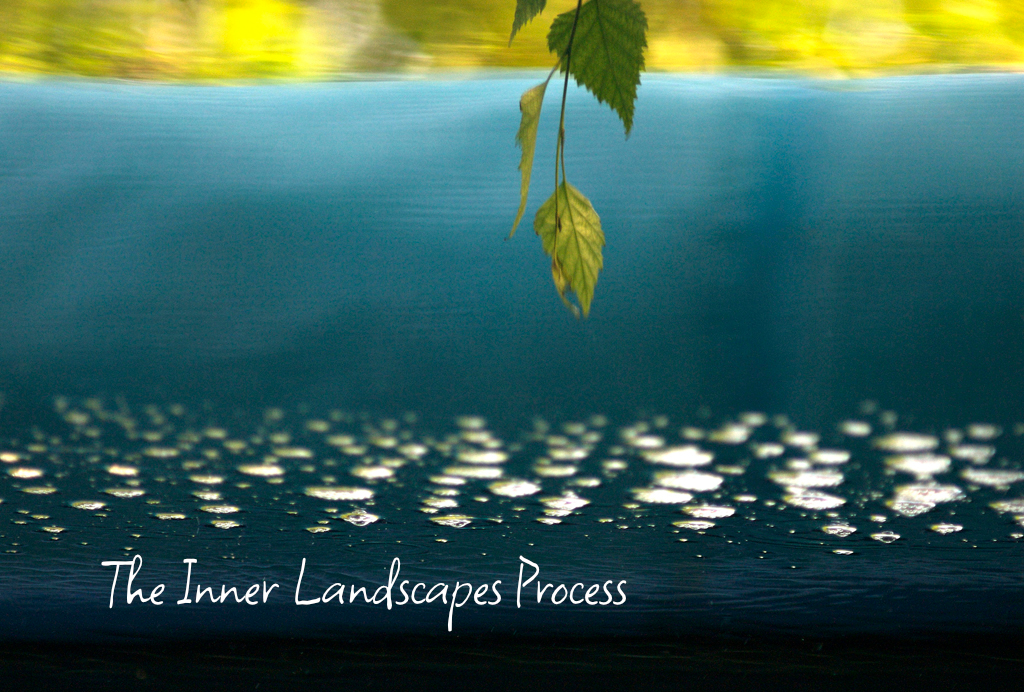
Inner Landscapes is a portrait of the ways we see the world. It can show us why and how we choose to look at the world around us, what we are drawn to focus on, what we end up seeing, and what it means in the context of our life at the moment.
All of these responses are a reflection of our personal makeup: our history, our beliefs, our cultural conditioning, our day-to-day life habits, our experiences, our imagination – all of which culminate in our deeply individual understanding of the world ...
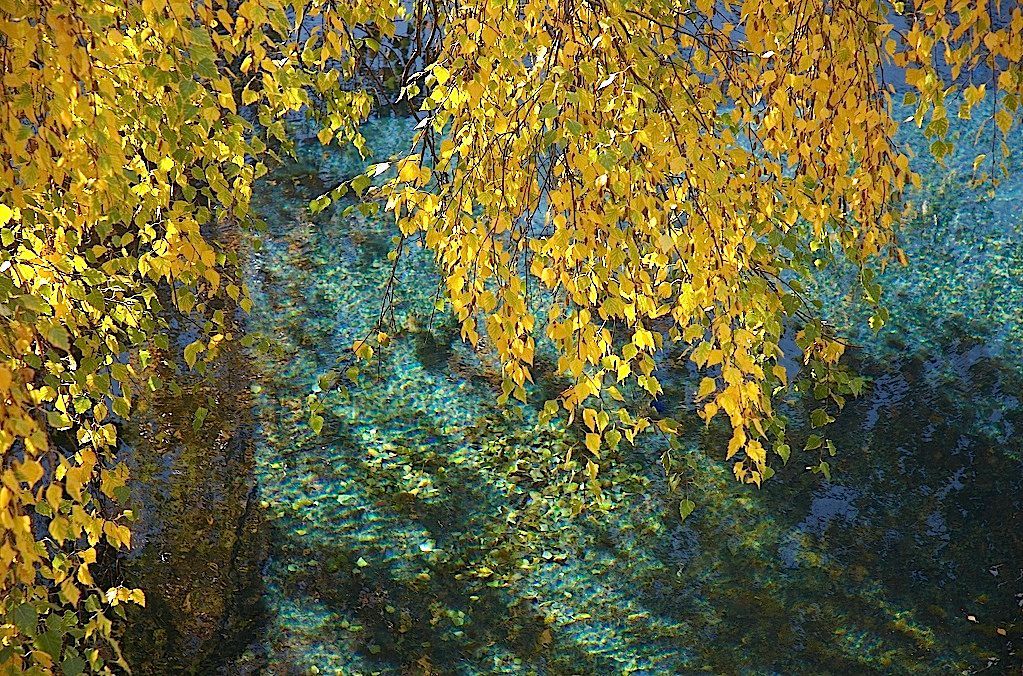
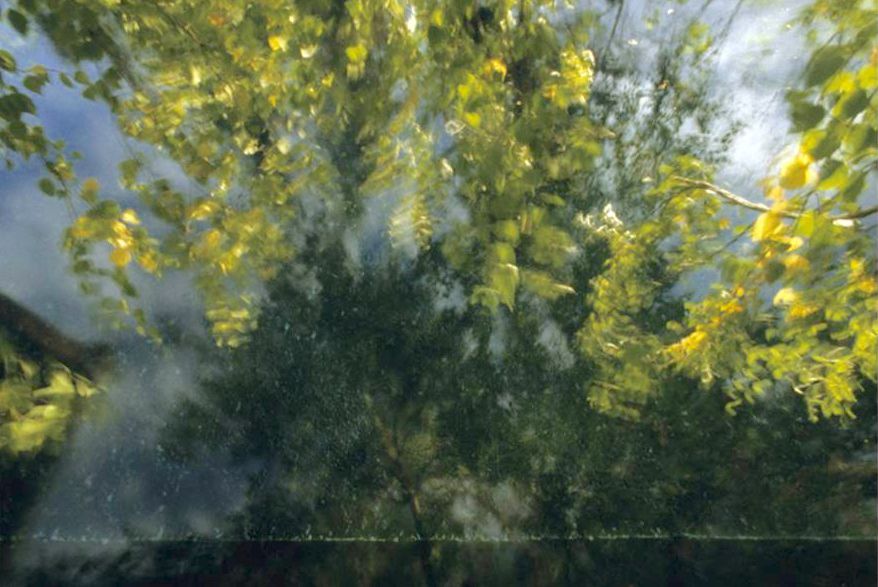
See Portal 1 for the beginnings of the Inner Landscapes theme. The power of this work was cemented 20 years ago when our friend LC came for a visit. She was newly engaged to be married, but admitted she was feeling very uncertain about how this relationship would impact her career as a writer, so I suggested we do an Inner Landscapes reading.
At the time we used small print images face down -- she chose one, unseen, to portray her question:
how will this relationship impact my work ... she turned it over ...
... and this image came up ...
She took one look and immediately said:
it’s all black! -- it’s not going to work, there’s no hope.
I was stunned, because for me, this is luscious and rich, full of warmth, flow, contemplation, continuity ... promise. But she only saw the blackness - which for her felt hopeless - and indeed the relationship did not last; this was a powerful confirmation for me of how the state of our mind (conscious & unconscious) and our heart influences our perception. In LC’s case this was profound, as she terminated her relationship and her life later opened up in an entirely unexpected way, as she went on to build an eco-resort in Mexico which she continues to manage today.
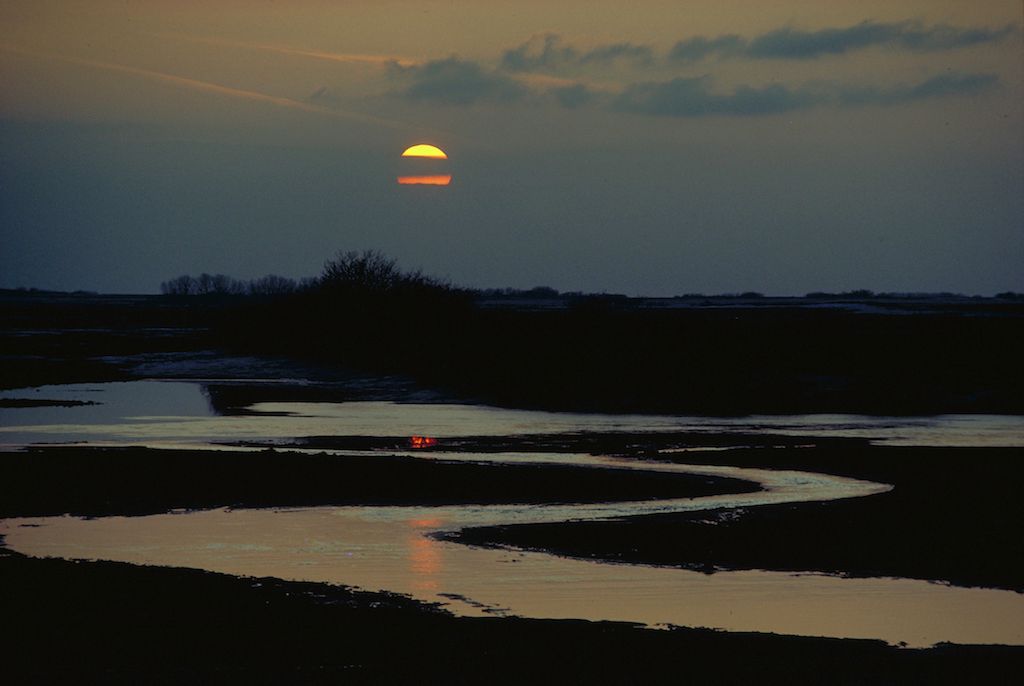
Before reading on, ponder a moment: What might the image above tell you about your life?
So the way I use Inner Landscapes is like a snapshot at this moment in time in response to a client’s question about their life. This process often becomes a celebration of possibilities ... revealing our deepest desires and our authentic self ...

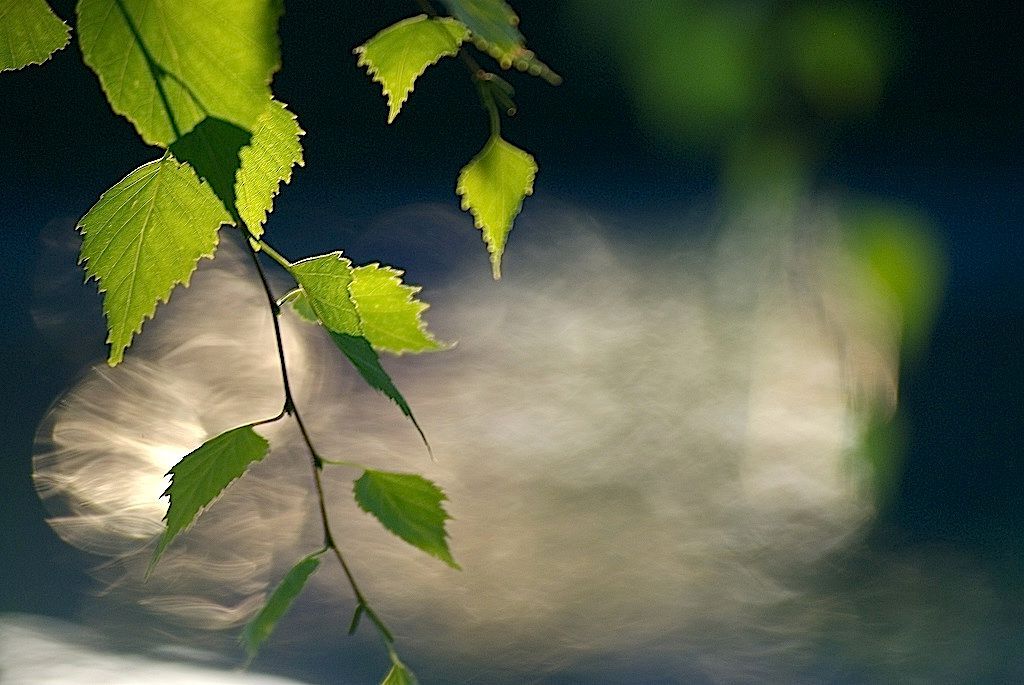
... uncovering a panorama of choices that are available to us ... which may not emerge for some time, but may be seeded or intimated in this experience ... a sense of what might come.
Images are by my husband, Courtney Milne, who died in 2010; all are courtesy of and available through the University of Saskatchewan Library and Archives.
In the most magical ways, the Inner Landscapes process can open us to queues from the world around us and shine a light on a niggling feeling - a sense of something that we can’t quite put our finger on – or the big question we just can’t quite ‘figure out.’
It works beyond our usual rational understanding – to bring these energies into our conscious awareness.
Deepak Chopra describes consciousness as our Inner Intelligence that mirrors the wisdom of the universe ...
This perspective fits well with the way I use Courtney’s images of the natural world to reflect our inner landscape back to us, where we can explore it in an empathetic and soulful way.
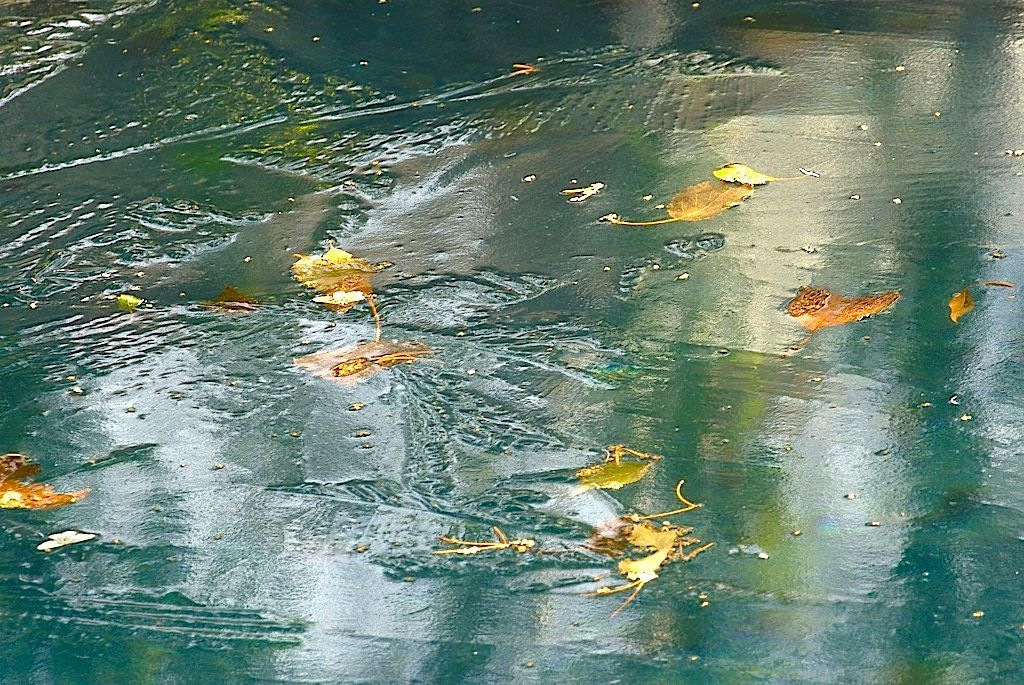
This technique can be used as we view any aspect of the world around us, because it is not about
the image or the land per se, but what it evokes and brings alive inside of us ... so
Inner Landscapes is a way of reconnecting to ourselves ... our personal wisdom ... our spirit ...
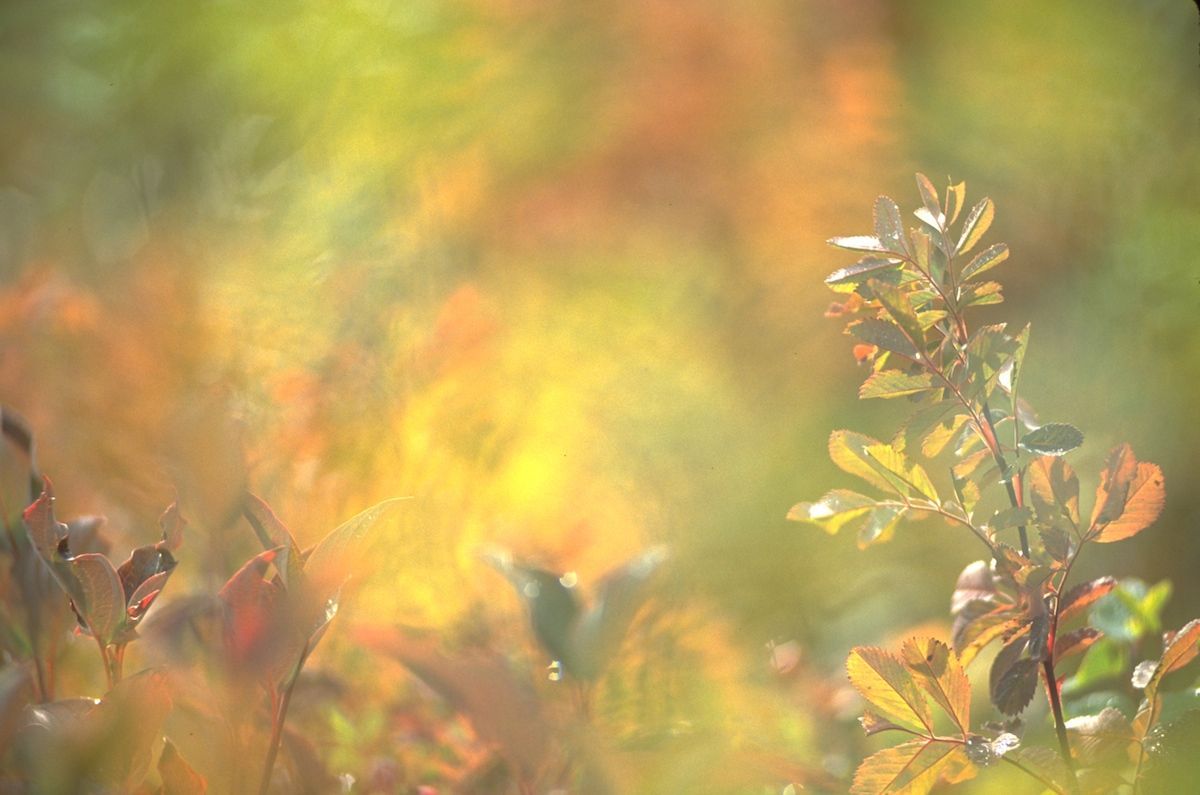

The difference between Courtney’s images of nature and other types of oracle cards or divining techniques such as the Tarot is that there are no concepts or names attached to the images, so it allows one to access personal meaning without being influenced by a theme or interpretation from other systems. Instead, it relies on the inner knowingness of the participant.
We may then reach into our own experience to access the images and wisdom that we carry and may have forgotten – to navigate through the deeply embedded mystery of remembering who we are in a more compelling and meaningful way - to discover how our stories are playing out in our life.
How Images Work on Consciousness
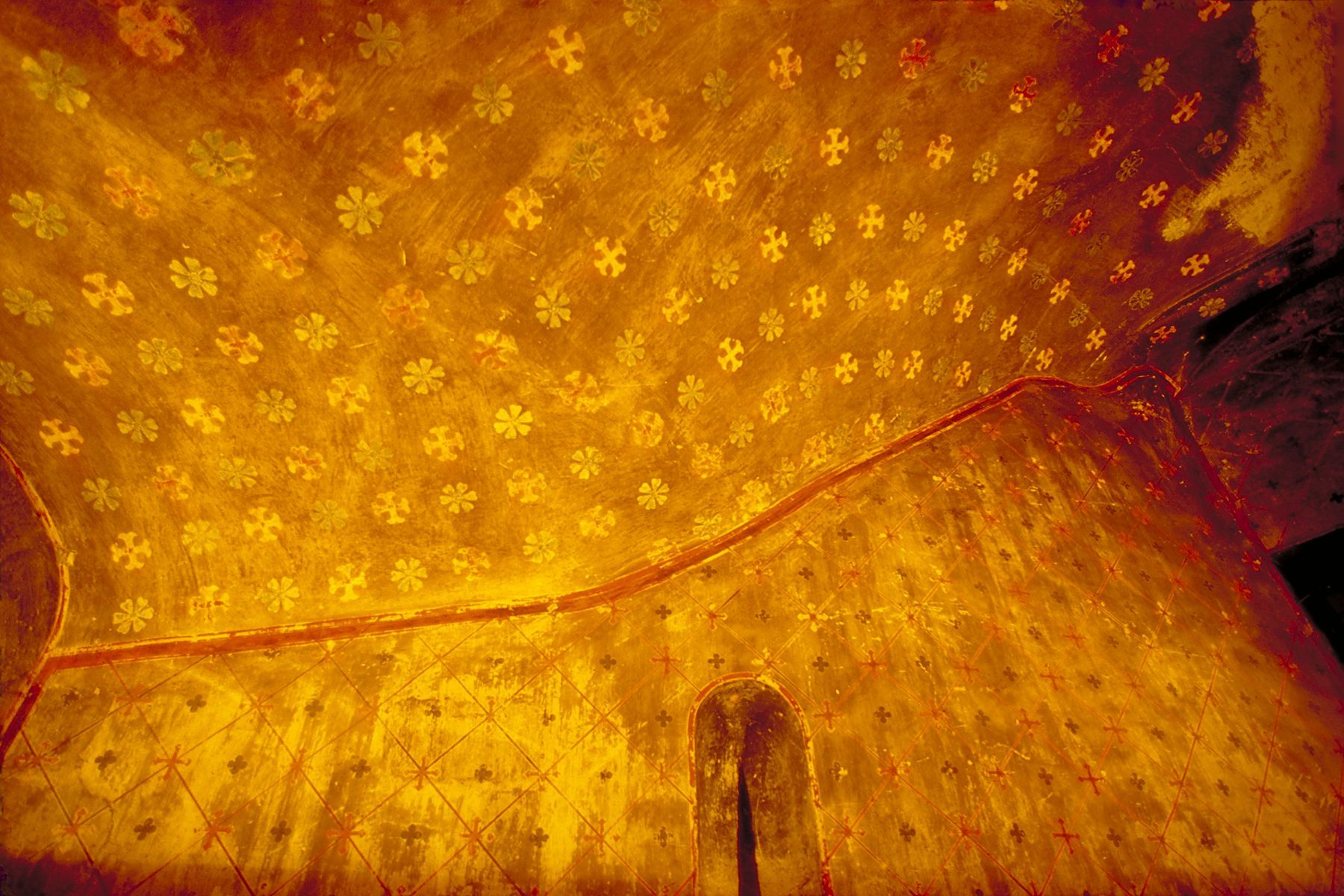
Throughout antiquity, all cultures have communicated thru story and images such as these ceiling paintings in the crypt of the medieval Gothic cathedral of Chartres in France.
This sacred underground space is imbued with layers of memory from pagan, Neolithic, Celtic and Christian history ... now dedicated to the Black Madonna ...
Our brains - and our hearts – can resonate with the mystery of these symbolic patterns even though we might not be able to explain them ....
Petroforms and rock art can evoke memories that echo and anchor identity and feelings to the past ... and are especially evocative under the luminescence of the moon, another symbol of the ancient cycles of life ...
These structures can speak to all of us, even if we don’t come from an Indigenous background in this lifetime ...

Courtney’s intuitive sense to embed the sun and the moon on this image of the pyramids of Giza, Egypt, reflect that feeling of connection, and how the traces of history speak to us in very mysterious ways.
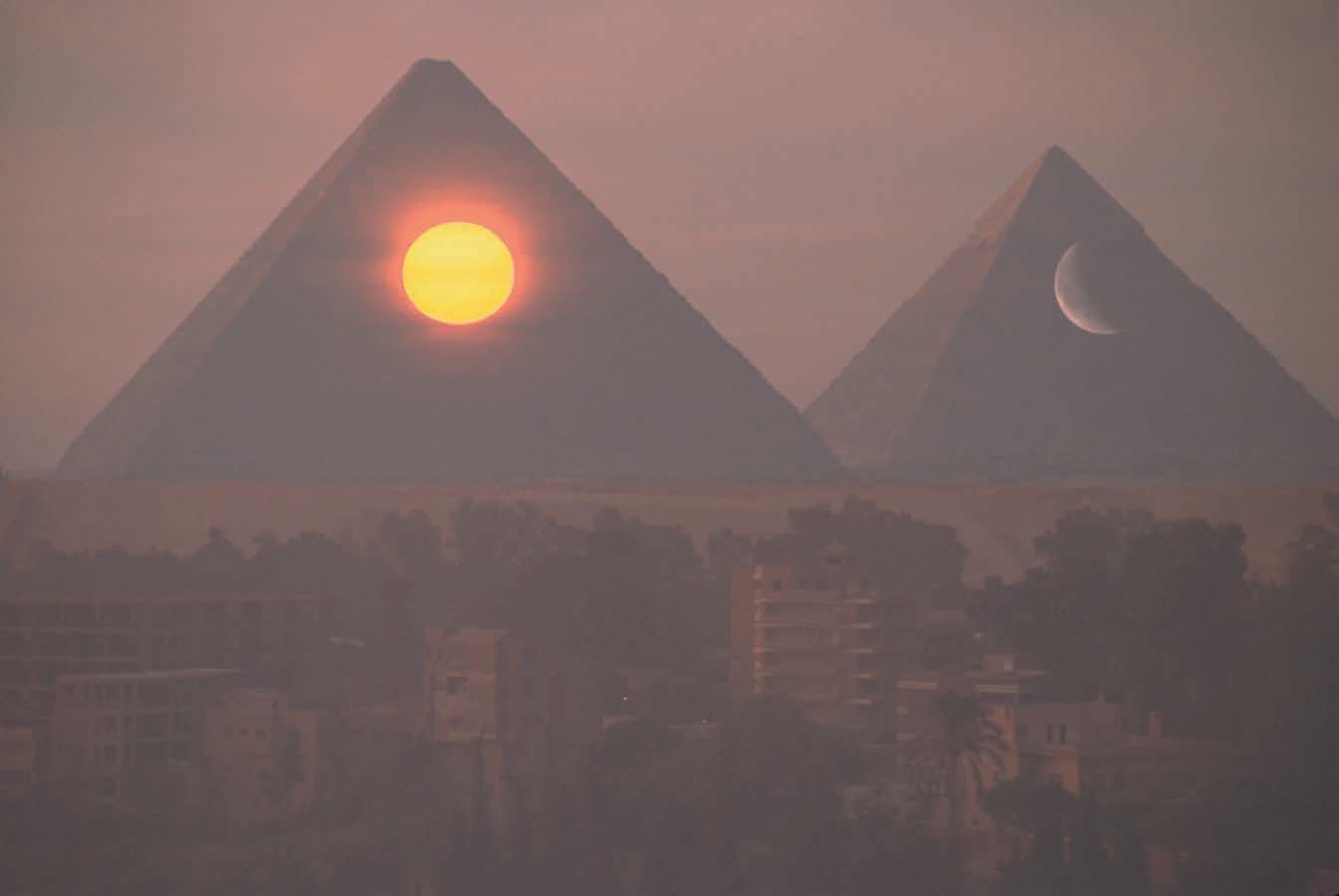
This meaning and understanding is often deeply embedded in our psyche, the part of us that knows and responds to image. Images make us more responsive to sensations and impressions and to the ancient wisdom and cosmic cycles patterned deep in our soul ... the poetic knowing emerging through the shadows.
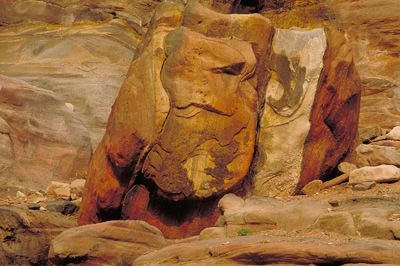
These natural faces in the rock formations at Petra, Jordan, were a delightful shock to my eyes ... an ancient echo .... an impetus that dropped me into a layer of deep memory and knowingness that found a way to communicate ... meaning may emerge through intuition, dreams, sudden insights or ‘aha’ moments, or what we often call gut level sensing, a type of somatic intuition ...
Or it might be a sense of clear and direct knowing ... a noetic knowingness that carries a luminescent energy that sparks a sense of awe, well beyond our ability to ‘figure it out’ ....
or, it may come through the heart opening that arrives in the presence of beauty. Dostoevsky reminded us that beauty will save the world, and for many people, beauty is the most constant pathway to soul .... to moments of wonder at this most mysterious life. So, I invite you to pay attention to what attracts you, or grabs your attention, or evokes that feeling of awe ... or, alternatively, images that precipitate fear or repulsion ... or a compelling attraction to the terrible beauty of fire or destruction ... because all of these responses mean there is something there for you to glean ... and your psyche knows it.
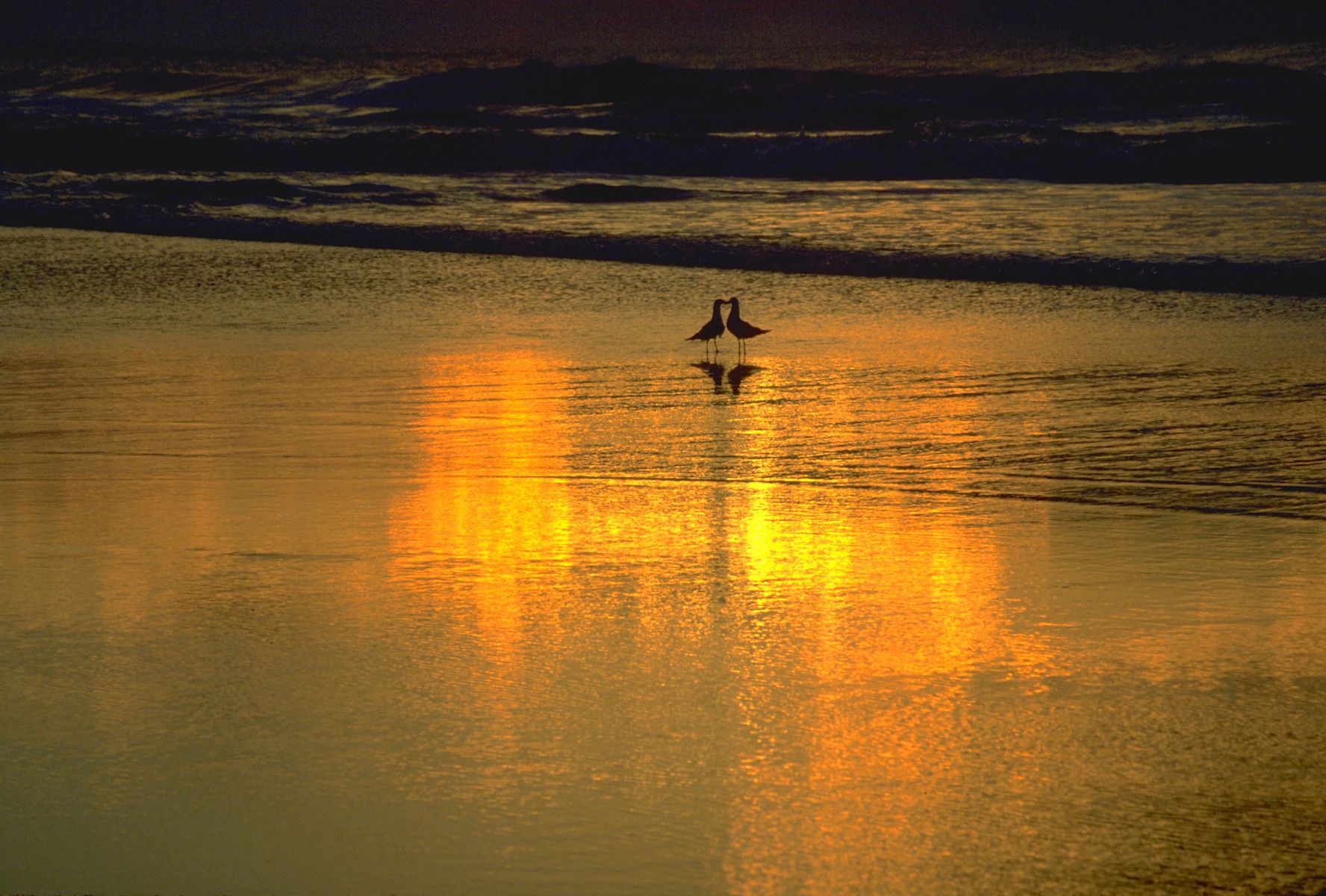
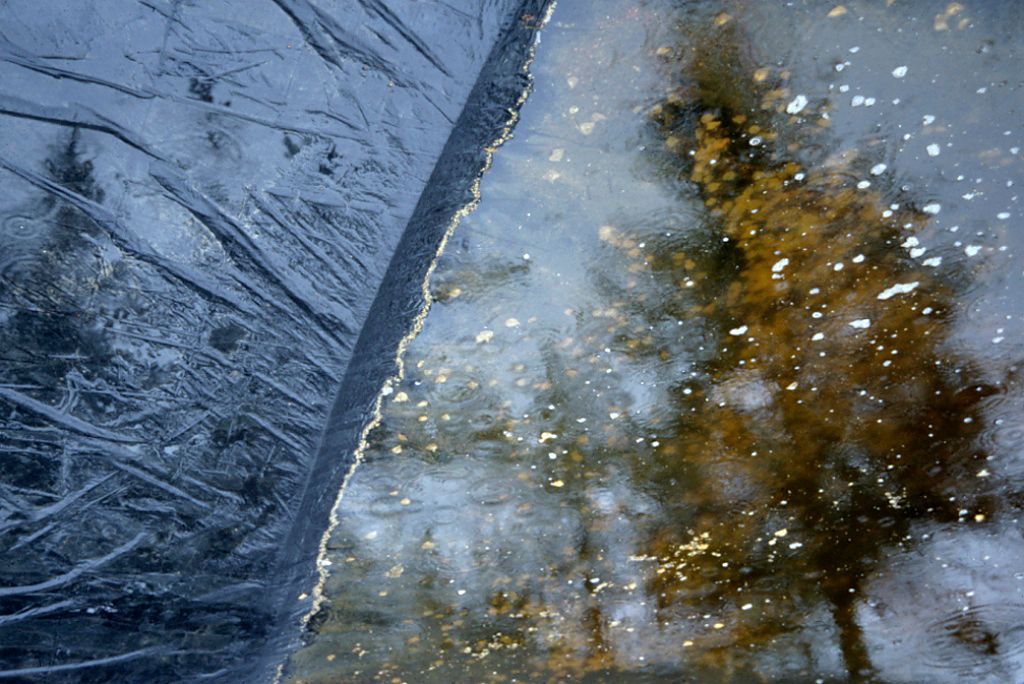
I think it is fair to say that in today’s chaotic world we sometimes feel disconnected from our surroundings, from ourselves, and from each other –
So the question that arises for me is:
How can we make good choices when we are so far away from the deep mysterious parts of ourselves that nurture our spirit – this soul, that is the basis of our humanity?
What we’re really talking about is what the great Canadian Jungian therapist Marian Woodman called the life-long journey of
coming home to oneself ...
through the evolution and
ongoing
deepening
understanding
of our personal consciousness –
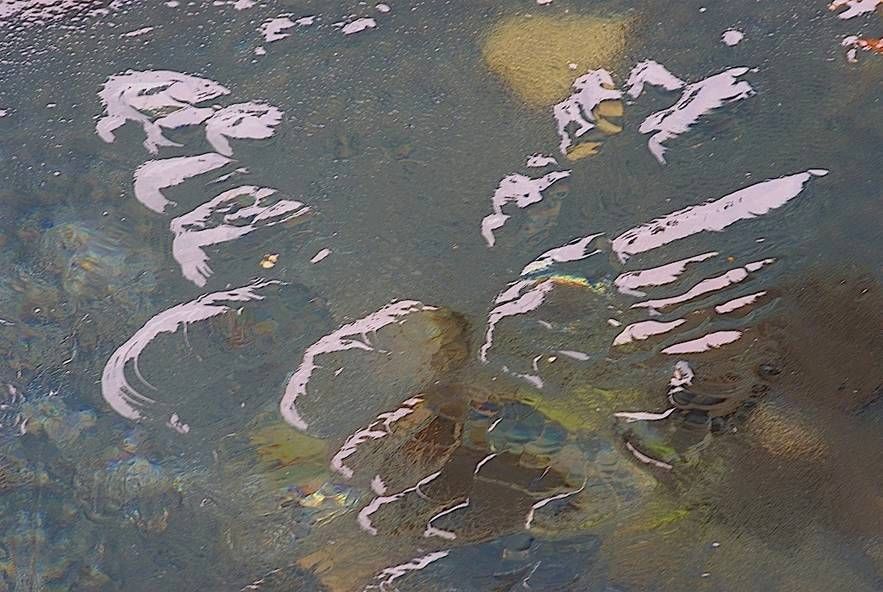
Coming Home ...
Courtney is a good example of that process of coming home to oneself. It emerged and clarified for him when, after thirty years of travelling and photographing sacred landscapes on all seven continents, he literally started spending more time at home. [see Pool Story]
This was our ‘back yard’ in Grandora, Saskatchewan – eighty acres of aspen parkland, meadows and wildlife: here with a canopy of the Aurora Borealis, Hale Bopp comet, the crescent moon, and stars ...

Serendipitously at the turn of the millennium he was drawn to start photographing the pool in our front yard that had been at his feet for nine years -- but he had never really looked at it.
Once he started, it took him several years to understand why he was so compelled to continue ...
this reflecting pool became a project of 45,000 images of feng shui – the interplay of wind, light, color, and texture on the water –
perhaps with the hand of the Divine to help him notice the delicacy and magic of frosted leaves embedded in ice.
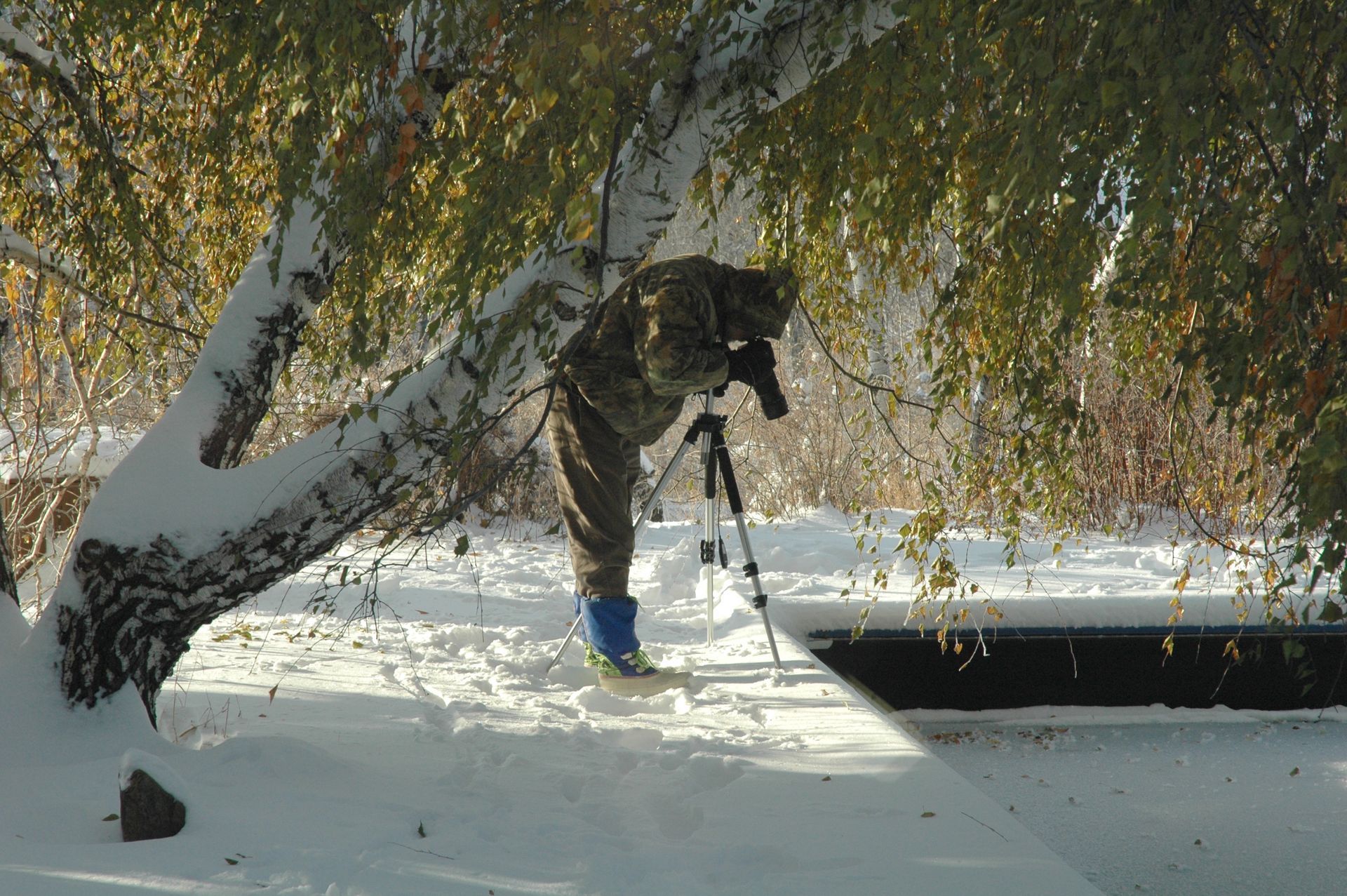
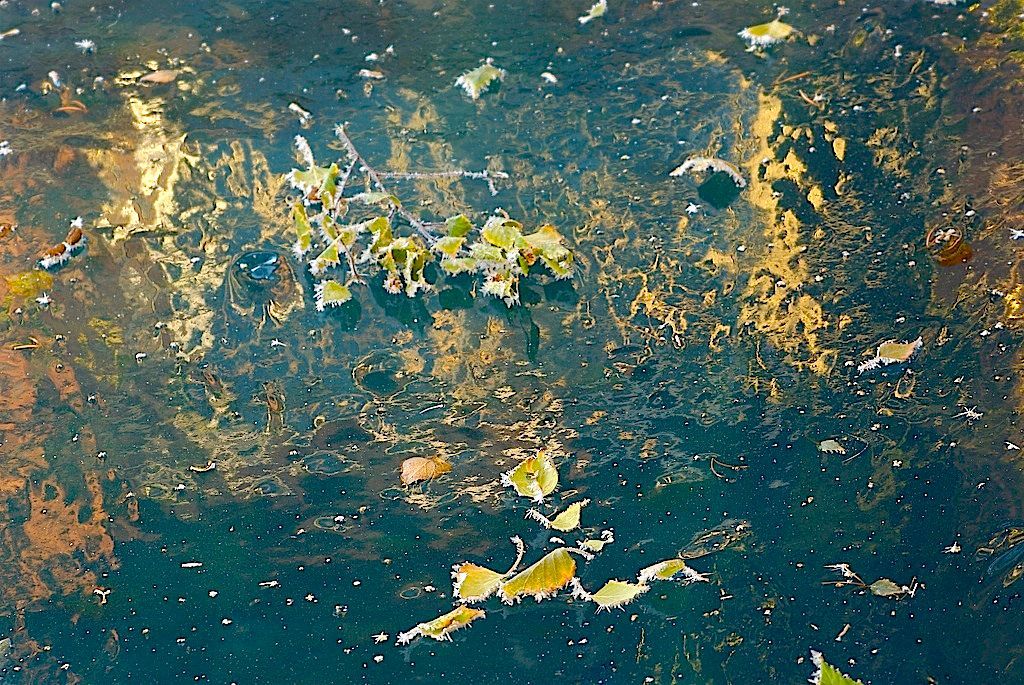
Courtney’s process became an echo of Marcel Proust’s quote, the real voyage of discovery is not in seeking new landscapes, but in having new eyes ...
in response to this insight, he wrote a poem about himself:
He searched the world over, and what did he find?
That earth’s greatest treasure is the ‘eye’ of the mind;
For when he got home, as wise as a Fool,
He found the whole world right there in his pool –
He named it
The Pool of Possibilities, because this 20x40 foot space of water presented images of every nuance of life, every potential available to us, a reflection of every mood and aspect of the natural world. Compare these three moods of leaves, light, reflections in the pool ...
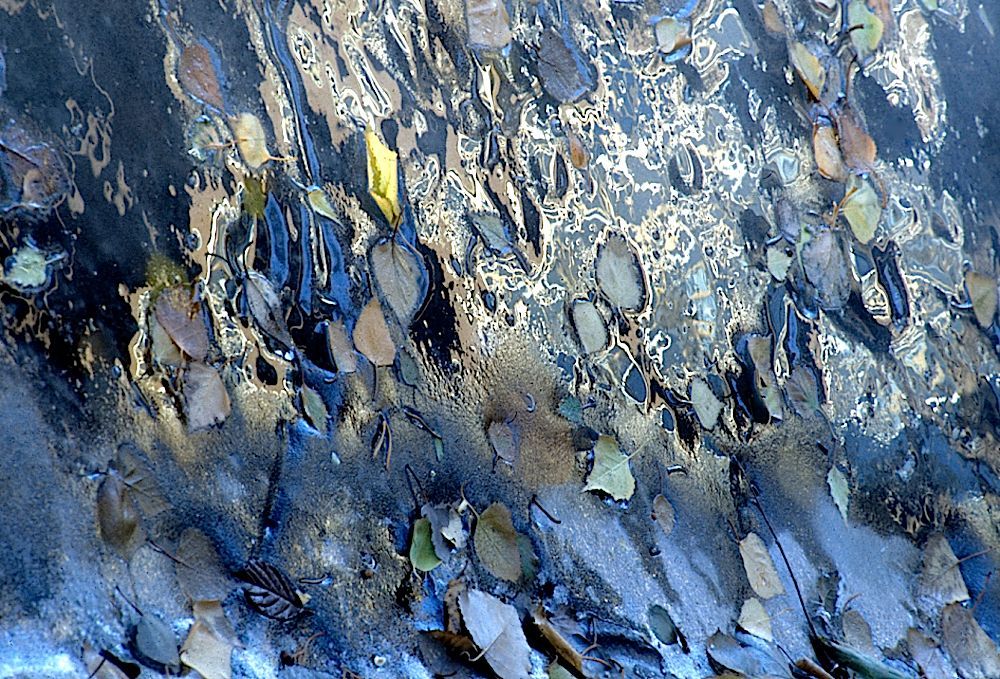

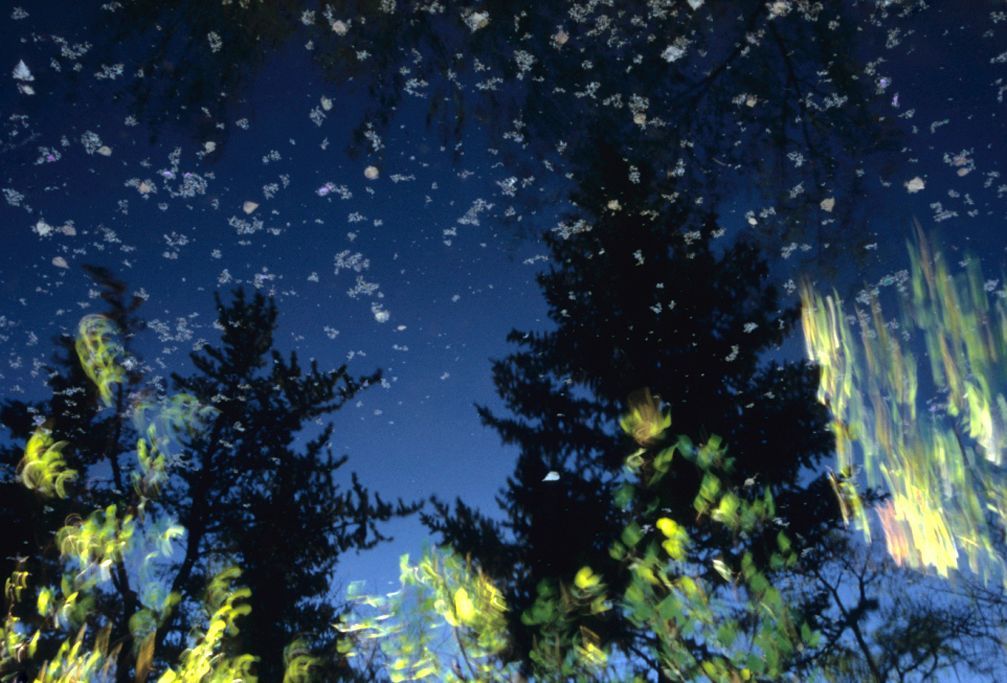
With this dynamic blue sky spilling light through the forest canopy with a swish of the camera
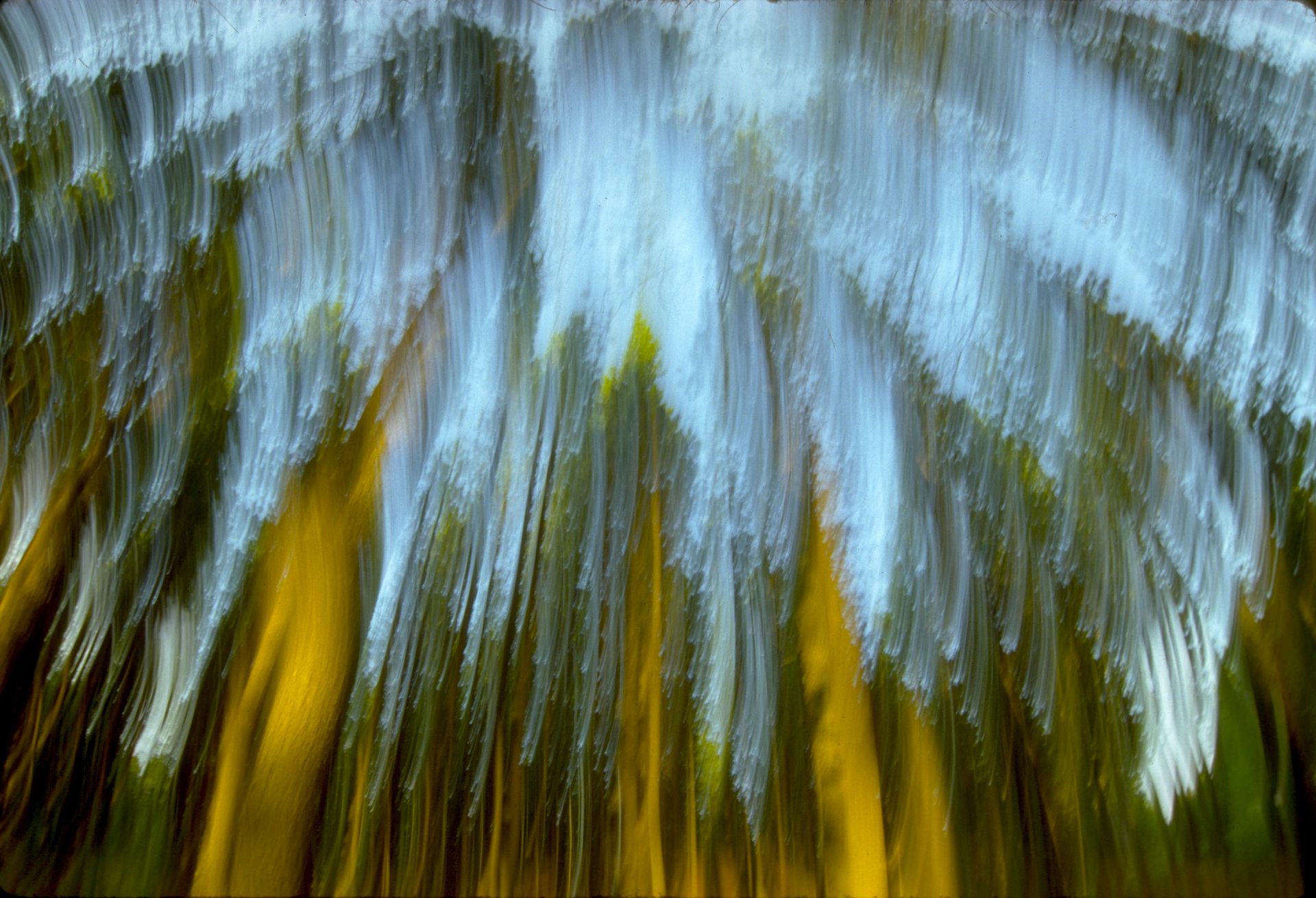
Perhaps this theme can be applied to our personal lives, to develop ‘new eyes’ as we journey through
the years, and are called, at each stage, to know ourselves in a different way ...
to gather all the pieces, to reconstruct our life and weave it into an ever-changing tapestry...
a new “inner landscape” at every turn ...
As we continue to renew ourselves, we will be called to explore our beliefs and attitudes, as well as our habitual patterns ...
to look at what we might be unconsciously carrying, and what may be holding us back – hidden in the mists of our memory ....
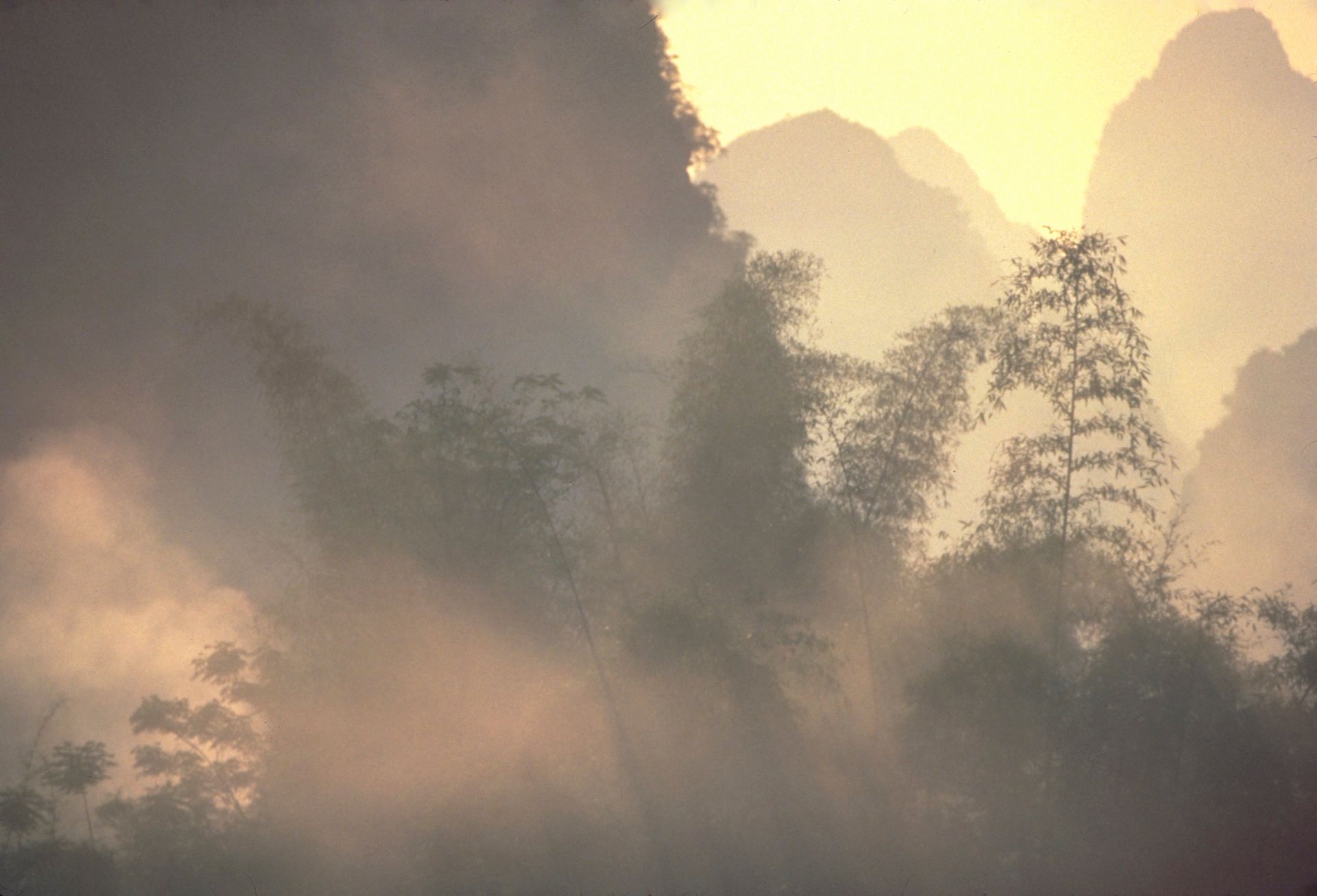
This Inner Landscapes Process is a tool we can use to tap into those hidden elements of our psyche.
Those of us who meditate or turn to prayer are familiar with a quiet place inside ... a place of peace and calm. It may be in your heart, or your Third Eye.
I invite you to put your awareness there as we continue to explore this way that the world can mirror ourselves to us.

So, in Inner Landscapes we’re looking for ways that allow us to see our world as Marcel Proust said: “with new eyes.”
From the scientific and Buddhist point of view, Physicist Arthur Zajonc suggests:
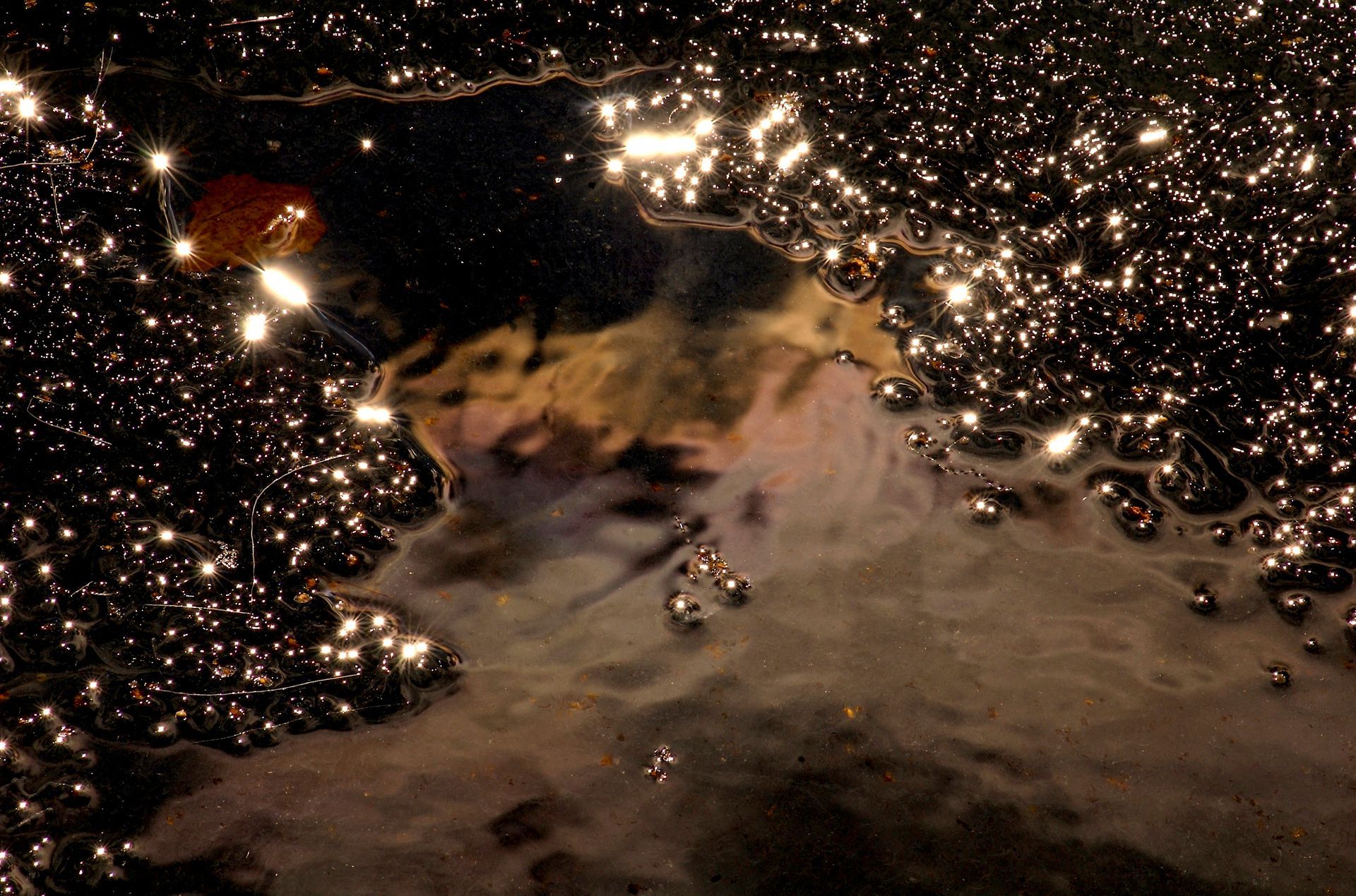
Every object well contemplated opens a new organ in us ... you have to live in that world of phenomena – you have to attend carefully, every object, well contemplated ...
Attended to -- over time -- repeatedly -- changes who you are –to the point where you begin to see things that you didn’t see originally ... and perhaps which no one before you has seen.
I don’t think anyone else has ever seen a swimming pool look like this luscious cosmic creation ...
John O’Donohue, my favorite Celtic philosopher-priest, repeated this theme in a rather poetic way when he said:
We need to find the ancient life within us, as inheritors of the mystery of the world.
The intention of the human journey is to know your own ‘inner country’ ... your inner landscape.
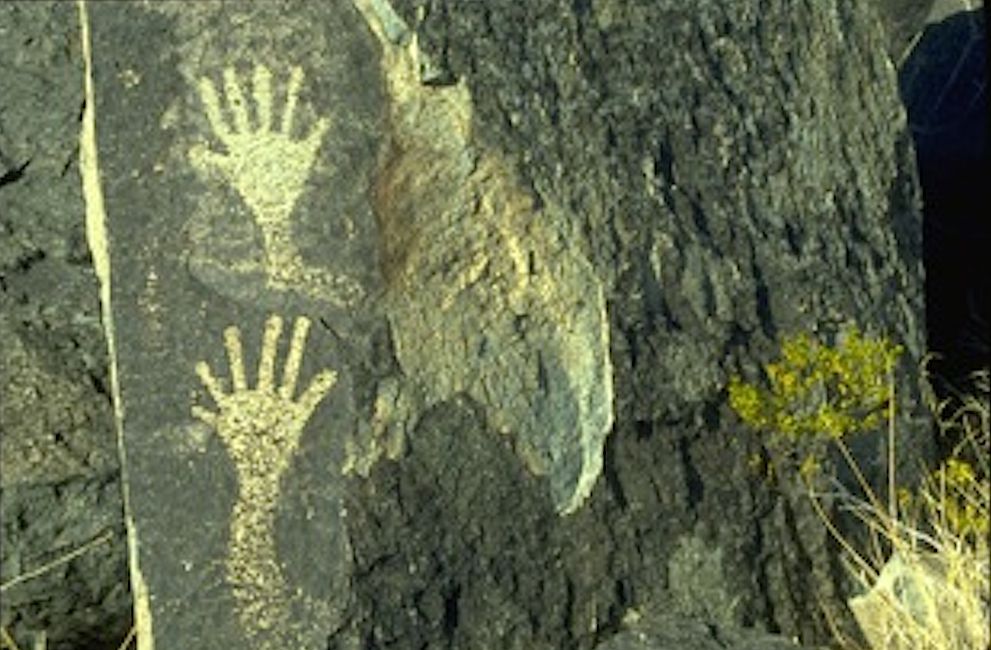

O’Donohue also says: through the visible we find our direction, it brings the world to us; but at the heart of visible, is the shoreline of the invisible ... and for this, we need the soul, which is our GPS – it animates our consciousness ... the eye of the soul is the heart of your memory – often deeply imbedded, but still accessible.
Renowned Canadian painter Emily Carr also identified this same threshold between the visible and the invisible, inviting us to explore what she called the tremendous elsewhere that lies behind ... which I think is echoed here by Courtney in this selective focus photograph of a forest of light.
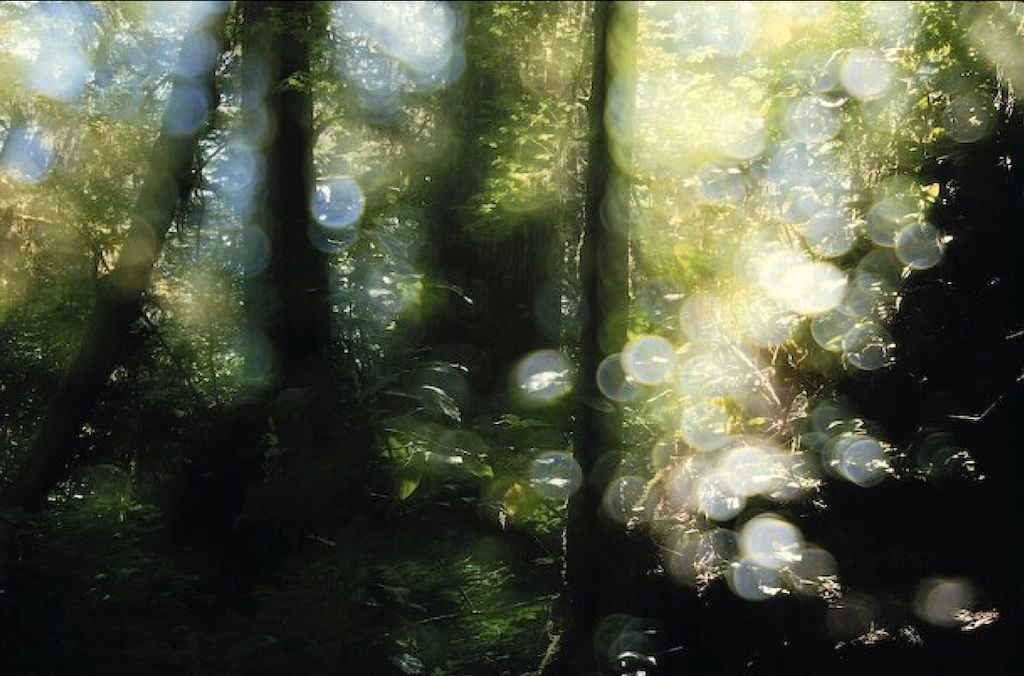
John O’Donohue suggests that we turn to poetry, or scripture, or the mystical (or perhaps the child within) to find the vital words that inhabit what he called this unseen threshold of the unsayable – to find the words that can mirror our own uniqueness – he called this our relentless originality ...
He said our task in life is to find this relentless originality which he called both a privilege, as well as a burden –
It’s a challenging insight, isn’t it?
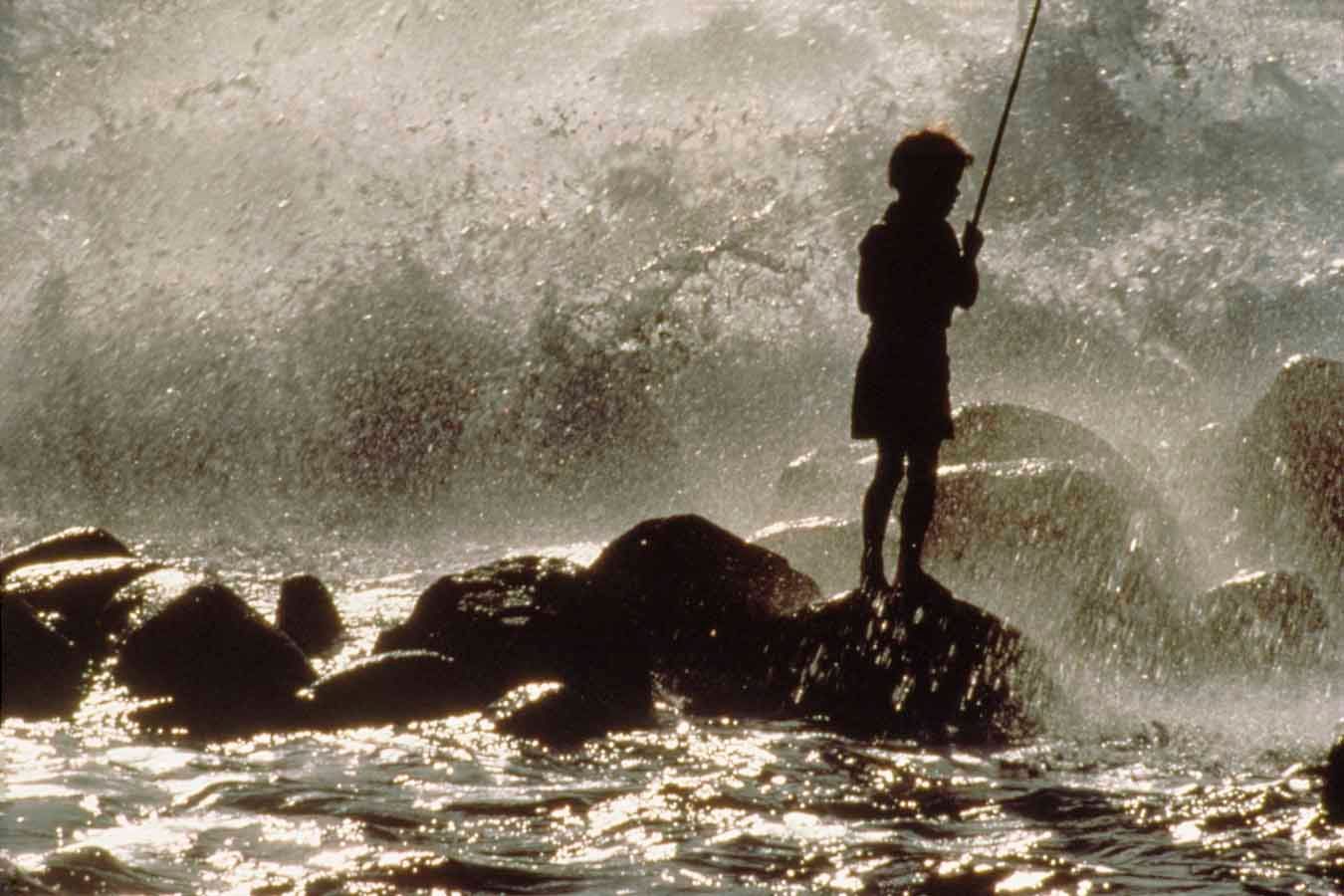
Revelation Through Image
In Inner Landscapes we use images to prompt that connection to deeper layers of self and soul.
We know from physics that darkness contains all the colors ... when we see something as black, all color has been absorbed ... no light is emitted – when we see colors, as John O’Donohue says rather poetically,
they are rejected by the blackness – so every brightness
comes from the darkness ... like this shimmering light behind the water cascading into this creation we call Angel Falls ...
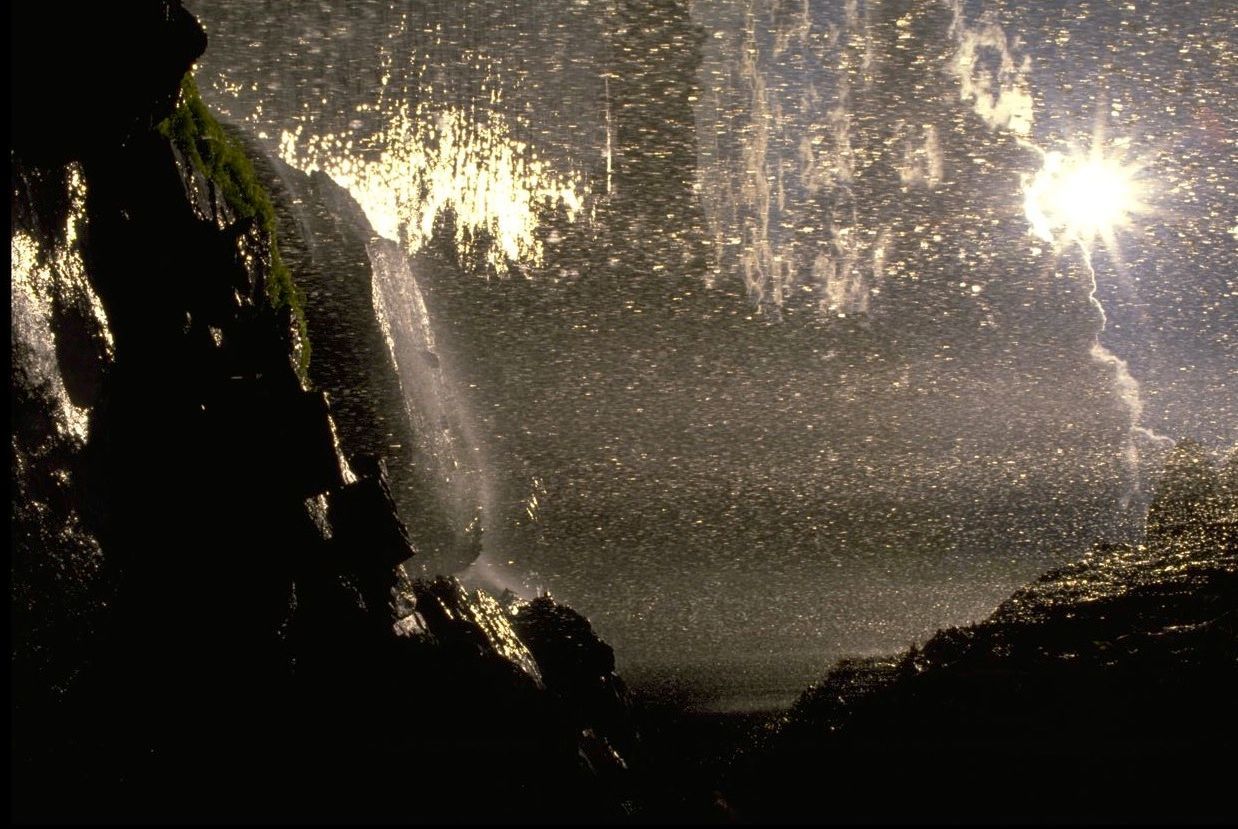
Whatever you notice may hold some meaning for you, whether it be through a glance from the corner of your eye, a meditation on a tree, or a detail or sense emerging from a photograph or painting.
Ophthalmologist Dr. Jacob Liberman suggests we consider the possibility that light grabs your eye and creates a moment of oneness ... and clarity... and in this way, awareness is actually looking for us ... that LIFE -- in the form of LIGHT - brings us the experiences we need and it often comes when we are not looking for it, but are open to receiving.
I remember working with a group of university managers in a retreat setting ... during a break I went for a walk, pondering how to expand this work. On my way down to the lake I passed a carpenter who was building a deck ... he pointed to a package of tools, and said to his co-worker:
that one’s not opened yet ... I was immediately halted as his words spoke directly to my dilemma, showing me there was more to be explored in the yet to be opened ‘packages’ of this Inner Landscapes work. Overhearing this serendipitous comment also reminded me that knowingness can come from anywhere, through all the senses – auditory, kinesthetic/feeling, smell, taste .... especially when we are in a space of reverie, primed to receive, disengaged from the mental mode.
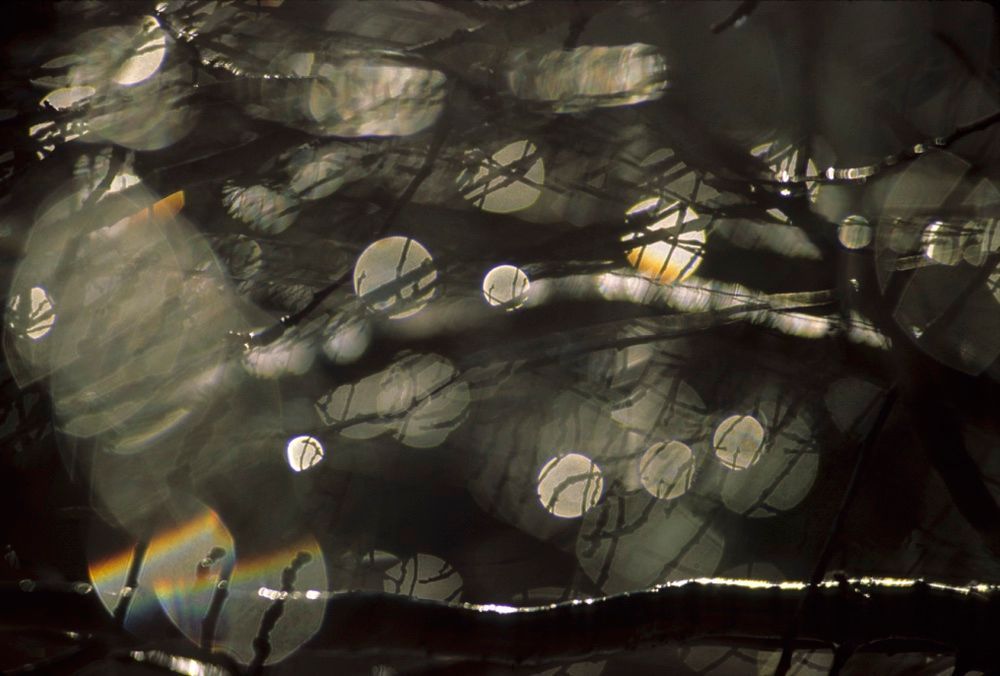
Now the question becomes:
how can we use this awareness, this yearning for wisdom, this threshold we are teetering on ... the knowingness that we have inside –– in our lives today?
ts eliot echoes my question in his poem, The Rock, as he asks:
where is the wisdom we have lost in knowledge ...
where is the knowledge we have lost in information?
Let’s look at a few examples of how images work in an Inner Landscapes session:
What is your first response to this image?
Ponder for a moment ... and wait for your interior response before continuing ...
This image came up in a workshop where a participant chose it (unseen, by number) to portray her question:
how can I have more joy in my life?
I felt the room become very still, and there was a collective inhaling of fifteen participants seeming to hold our breath while our brains (including mine) kicked in – ‘I don’t see any joy here’ ... She, however, was clapping her hands delightedly, saying
it’s just like when I was a child playing in the dust ... that’s what I need, more childhood glee ... as I felt a great exhale in the room.
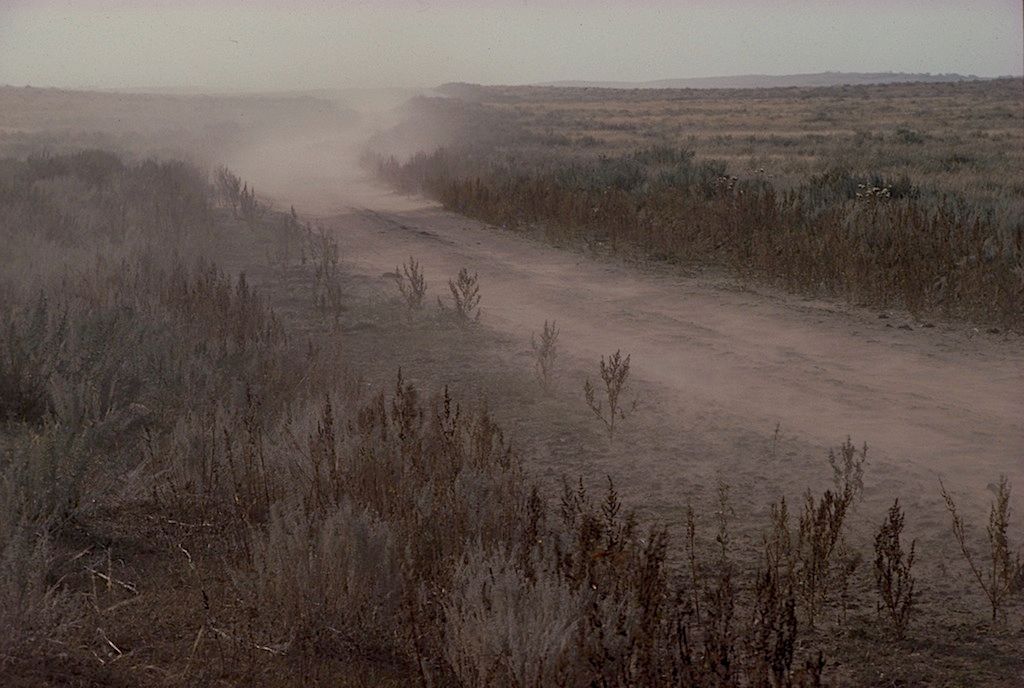
In the next example, a university professor asked:
how can I find more meaning in my work?
As she contemplated this image she said:
I’m always looking for something more ... the grass is always greener on the other side – and yes, here, the other side -- the vibrant background colour draws me – it’s beautiful ... but I realize it’s out of focus compared to the leaves that are right in front of me -- they are tangible, touching the water, making a ripple -- this tells me that I can also create more of a ripple effect with my work. She continued to contemplate the colours, her feeling of connectedness to flowers .... and the recognition of her ability to focus along with her need for perfection, as well as novelty – all the elements that spoke to her about her inner landscape.
This client asked:
how can I connect with a deeper part of myself and let it emerge in my writing ... and blindly chose this from a series of printed images face down on the table.
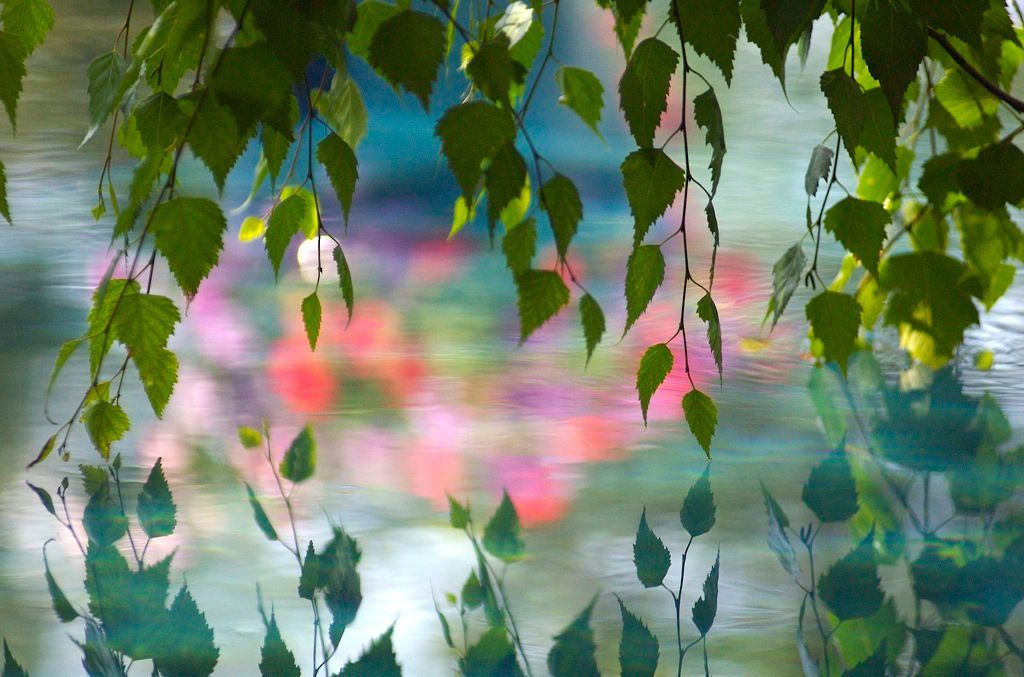
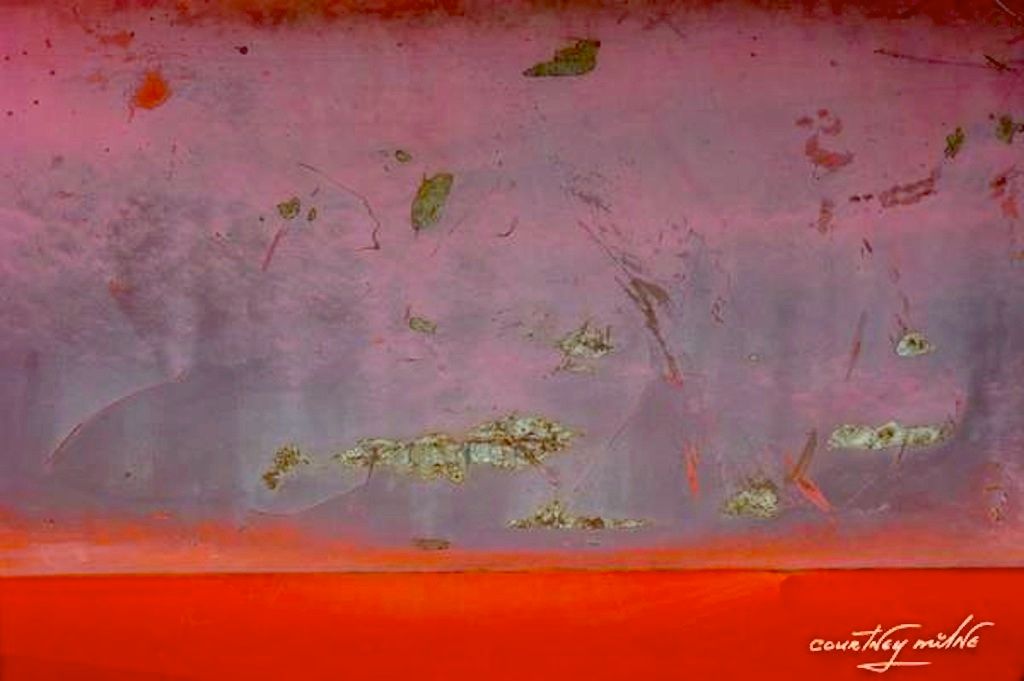
She took one look at this and forcefully said:
I hate this colour, that orange line is ugly ... what is this? ... the creatures are pathetic, with broken bits, and missing bits ...
Pointing to the subtle gray shape facing the edge on the left, she said:
it looks like a whale ... she then saw the shadowy shape extended up as a human figure, as
the shoulders and the back of the head of a child ...
Continuing to contemplate the image - which she still did not like - she then said this indicates how I turn my back on things and ‘put on a happy face’... this was a major recognition of how she shuts down her feelings. All of these comments were spontaneous, without any prompting from me ... as she continued to contemplate and relax with the image she said: it's a very interesting picture because it is multi-layered ... at first, I only saw the surface ... I was always taught to be so conscious of the surface – the superficial – I was never taught to look deeper ... it makes me feel sad for what I missed out on.
... after a pause she went on to say: the orange line is so definite ... something is shut down, closed, finalized -- but -- maybe it could also be a solid foundation --- like ‘the line is drawn here’, and I can't get into this unpleasant place – she continued to explore it – and she saw the ghostly child figure walking away, through and past the chaos. We were both fascinated by how much could be elicited from an abstract image of rusted metal on the side of a truck.
This reading was also powerful for me to observe as I had used this image for years, but had never seen the ‘whale’ or the ‘head of a child’ figure in the lower left ... a perfect example of how inner landscapes can work in such highly personal and significant ways.
These three examples beautifully portray how an image can contain unexpected vital elements of insight and enhance one’s awareness of being in the world. They also portray how astonishingly different viewpoints can emerge ... independent of liking or disliking the ‘chosen’ image.
The Inner Landscapes session is structured around seven images chosen, in turn, by the client. The images are unseen, either as small prints face down on the table, or digitals images chosen by number to display onscreen, so the client does not get to ‘choose’ an image they like. The participant is encouraged to pause, tune into their intuition, and then make their choices, one at a time (not looking at the images), using these concepts: the 1st image is used to portray the client’s question, the central issue they have identified or the crossroads they feel they are facing. The 2nd is about historical landmarks ie ancestral issues, life experiences, beliefs or world views impacting their way of looking at the world. The 3rd is used to represent the precipitating events that have brought them to their question ... why has this question surfaced now? The 4th image addresses personal consciousness: the spiritual, emotional, and psychological issues that might be impacting their question ... the 5th relates to earthly issues, to one’s physical place in the world and what makes one feel safe, secure, grounded and at home with a sense of belonging to oneself ... literally and figuratively. The 6th portrays the pathway out of the dilemma, what thresholds might need to be crossed, and what alchemy might be needed in order to proceed to the 7th, the evolution of the question ... the outcome or vision of completion.

The images are then revealed, one at a time, and each is explored in relation to the concept it is connected to. I take notes on what the client says as their exact wording is often symbolic and highly significant. Each image offers another angle or layer of understanding of the client’s question. Of course, this is not a linear process ... all these aspects of life are intersecting and impacting each other ... there is much intertwining in this tapestry of a life, so there is no rigid answer or response that belongs in one place.
All are potential portals to understanding ... to a feeling of sanctuary ... a place to make meaning.
Example of Images in Two Specific Places in a Session:
A while ago I facilitated with an Inner Landscapes session with a group of First Nations students who were feeling overwhelmed as they were heading into final exams and then into their first teaching jobs.
Their group question was: how do I take better care of myself – this image of Mt. Fuji through a dew drop came up as a portrayal of their Central Issue – and their heartfelt responses poured out:
it’s about building focus ... you’re in your own bubble ... you have to have a clear vision of yourself ... it’s an uphill battle, if you fall you need to keep climbing ... there are many pathways up the mountain ... it’s a struggle to take care of yourself but it’s nice at the top ... every step is meaningful -- if you backslide, you can refocus on the circle in the centre ... the circle represents the medicine wheel, there are people there to help us ...one young woman finalized their comments, saying: it gives a whole new feeling about being successful and seeing the finish line – I have never felt celebrated for any of my accomplishments.
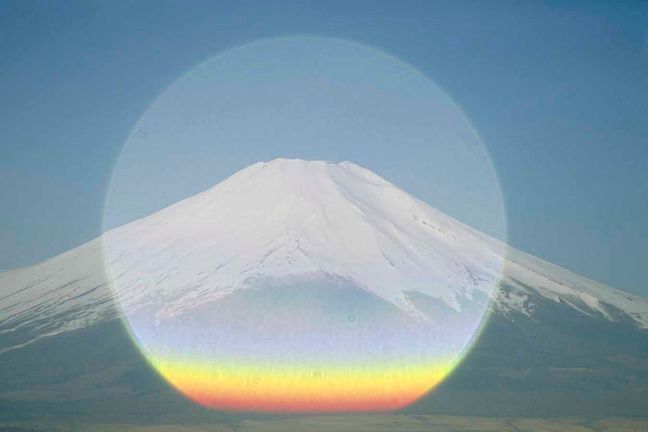
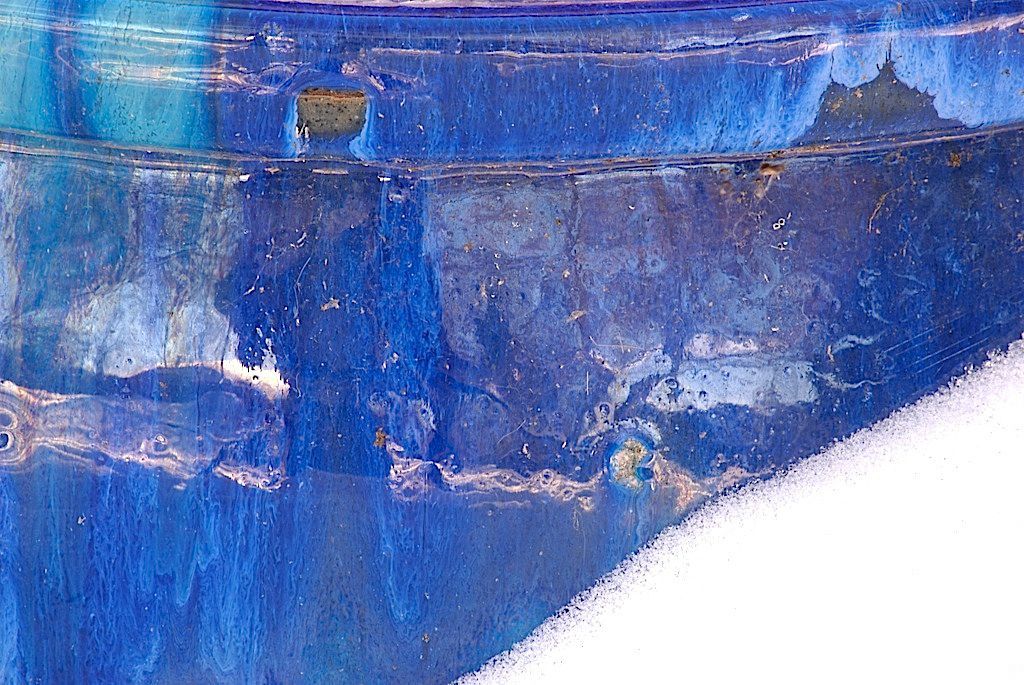
The second image is natural patterns in the glazing of a flower pot – it came up in the Past position, inviting participants to look at how historical aspects of their life might be impacting their question ... their life experiences, culture and beliefs. Courtney called this image The Seeker; he saw it as a man finding his place in the world, looking at his proverbial ‘castle in the sky.’
I was shocked at the immediate response from someone in this group: that’s a priest, and a residential school -- one person saw the brown head as full of worries and fears ... another quickly replied full of shit – another said but this image tells me I don’t need to have those worries; another person said it’s about keeping my head above water; some saw the ghostly elements below the line on the pot as spirit guides and the ancestors ... something from the past I could rest on ... the white snow gave one person a sense of hope ... and of history dissolving away; another said: beauty redeems past hurts ... it’s an opportunity to make new choices. This was a powerful experience for everyone in the room, students and teachers alike ... with the promise of further discussion and support for coping with this ancestral trauma.
These examples show how contrary responses can be, depending on your inner landscape ... what you are bringing to the question. As seen here, it is also important to note that images can trigger deep responses and bring up hidden feelings and trauma. The client is always reassured they can stop the process anytime, continue where and when they feel comfortable, and is encouraged to seek ongoing support in a therapeutic situation as desired.
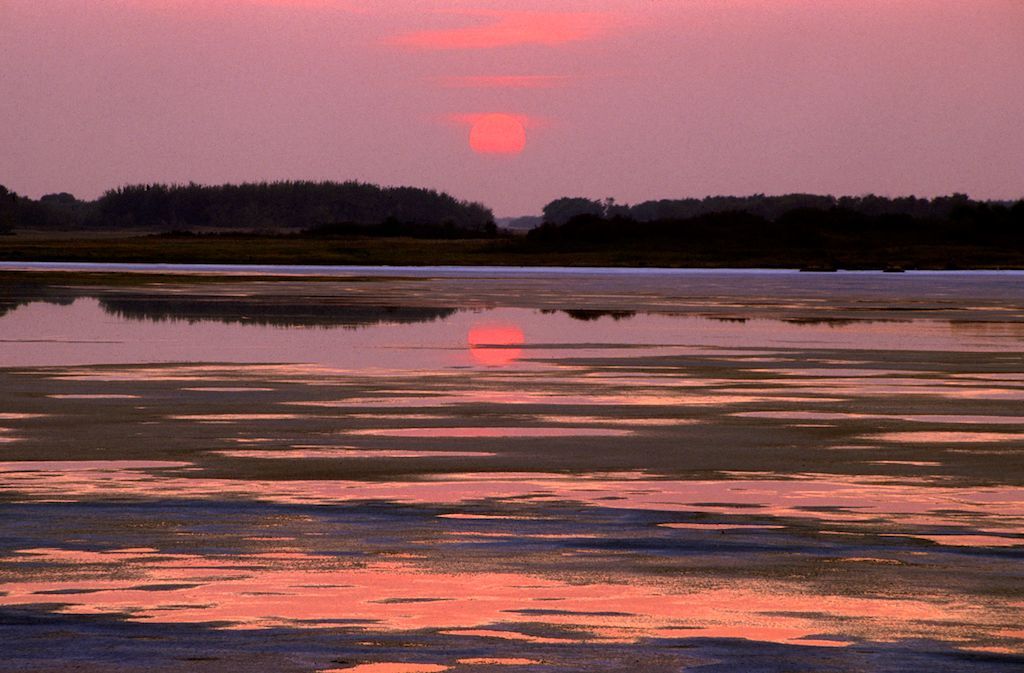
Colour, texture and other landscape elements speak ...
In addition to your initial response to an image – a feeling, a reaction, an insight -- there are many themes and subthemes that may arise when you explore the details of an image.
Let’s take a brief look at how some of these elements can be used to tap into the more subtle clues the image may offer. You might want to consider a question in your life as you view these images. Open- ended questions work best, as with the examples through this section ... a question that could have a ‘yes’ or ‘no’ answer does not encourage nuances.
Colours can be powerful, as seen in the orange line by the client looking for a deeper part of herself in that abstract image (above) ... color often evokes strong feelings, which can be a route to inner knowing through a variety of cultural, personal, and situational variations ...
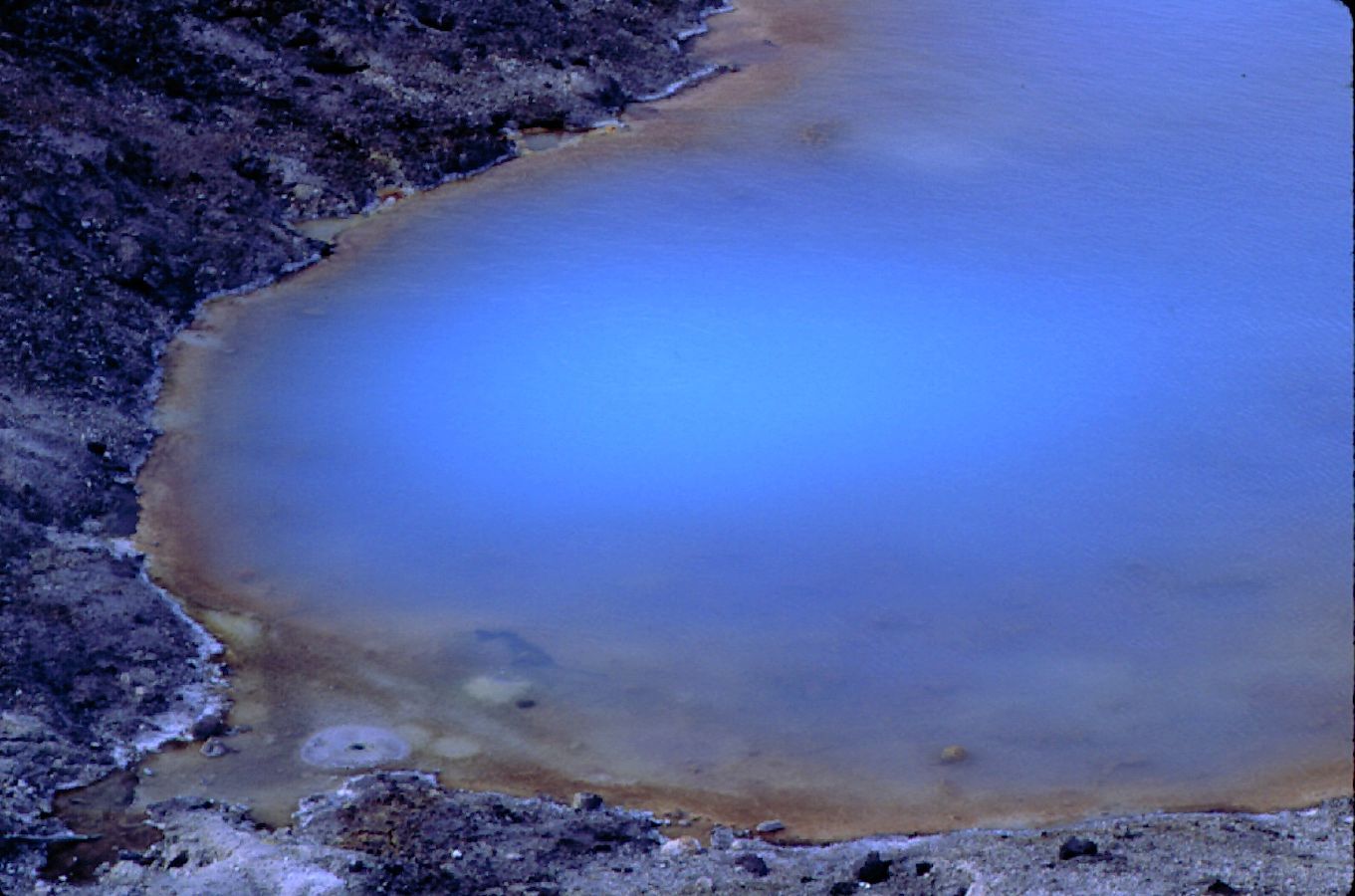

Blue often feels harmonious – for me the stillness and purity of this opalescent lake emanates a sense of spiritual connection –– while some people find it dense, and the purple rocks ominous.
Yellow often offers hope and happiness – for some, this image may feel out of focus, or disturbing if you prefer more documentary images – others find it delightful and joyful.
Black may feel deep and mysterious - or alternatively, a sense of the sinister, a foreboding, or of death.
The patterns here may be delicately intriguing ... or for some they might be reminiscent of insects or other creepy crawly creatures ...
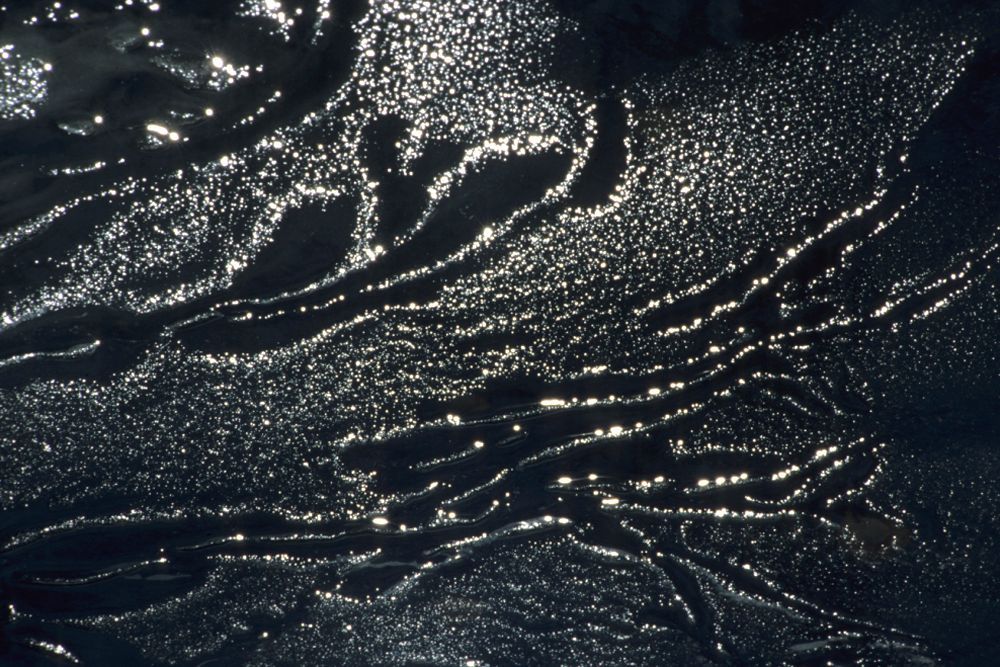
Black combined with red may elicit feelings of excitement and passion ... or reflect grief or fear ... or burning anger roiling in the belly —
This fiery sky over the top of Uluru captures that feeling of uncontrolled wild vibrancy.
I may then enquire:
“How is your core? ... is it full of fire, ready to explode? ... is it a healthy fire? ... or is it flaring with suppressed emotion?

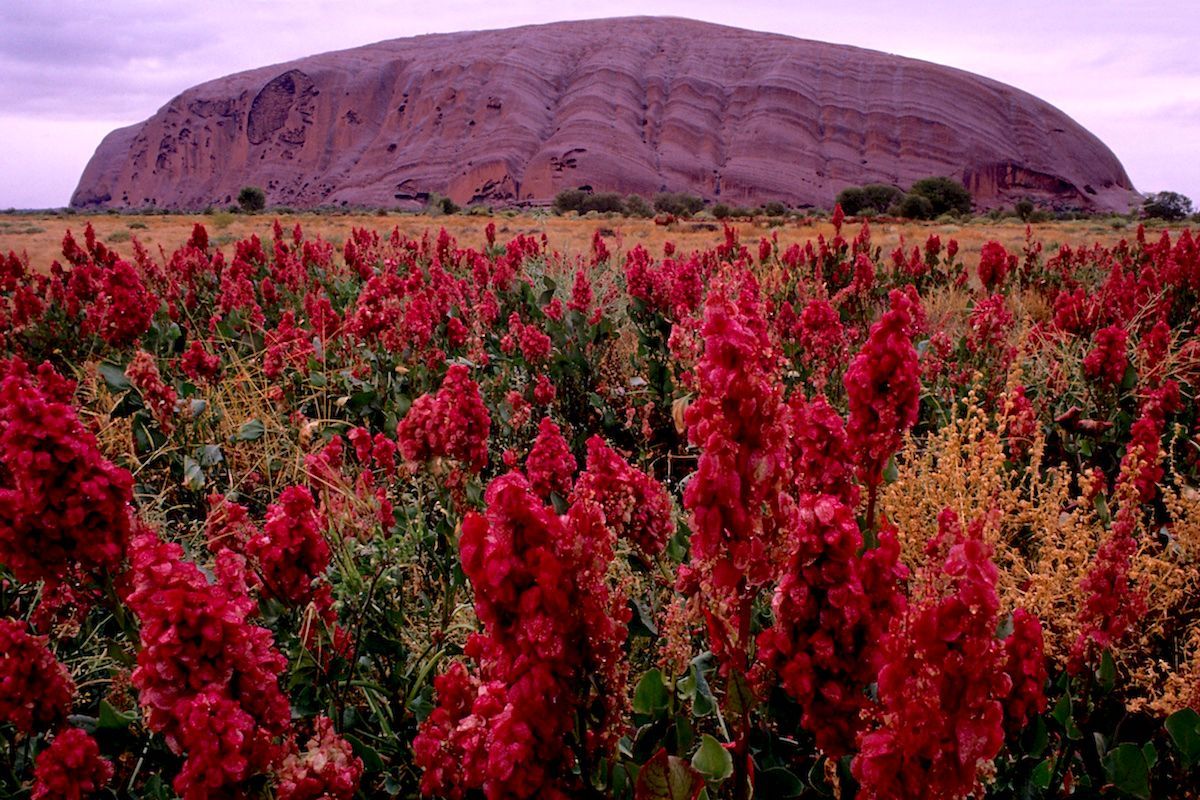
... while the colour and texture of this red- pink-lavender landscape of Uluru feels like a child-like frolic through a primordial garden ...
unless you prefer a more manicured garden, one without those pesky weeds ... one you can control ... if so, what might that say about your life?
Textures and shapes can also be evocative ... some people may take delight in these hoodoos at Bryce Canyon -- a fantasy land to explore with the reward of a ‘golden castle’ at the top ... others feel lost, imagining ominous spirits lurking in the sharp projections ... in fact the local Paiute people said these pinnacles were the Legend People turned to stone by the coyote trickster –
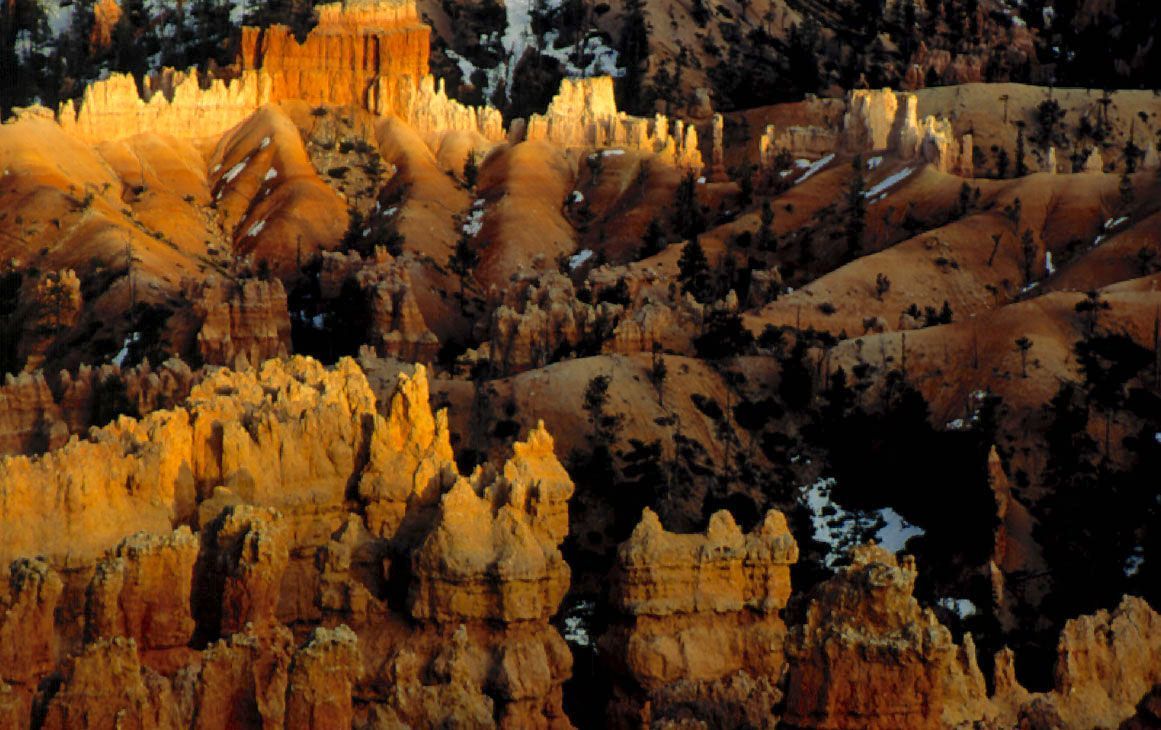
This is also a good image to explore one’s standpoint or point of view: depending on the question the client has brought to the session, I might ask: “where are you in this image? – do you see yourself dancing through the labyrinthine pathways? ... or are you slogging through the snow? ... where do you want to go in this landscape? ... do you see the way through? Are you excited, or does it feel daunting?”
OR ... “are you on the outside, looking from a distance? If so, does this reflect a theme in your life? ... do you often feel excluded, not engaged, not feeling you belong?”
What I ask depends on the question the client is working with, what has already come forward in their response ... or another angle that could be followed.
A rather documentary image of fence and sky can elicit remarkable insight. On first viewing this image, many participants ask: is it a sunrise or sunset? My response would be: how would either situation relate to your question? I would wait for their response before exploring some options ie if it is a sunrise, it might indicate new beginnings; if a sunset, it might feel like an ending of something in the darkness of the coming night.
This then may bring up point of view: I might ask: which side of the fence are you on? ... do you want to get to the other side? How would you get there? (over, around, through) ...
One client was questioning:
how can I find a better balance in my life while trying to manage a long-distance relationship? This image came up to portray the
Precipitating Events leading to her question. I asked her ‘where are you in picture’, and instantly out of her mouth popped:
I’m on the fence ...
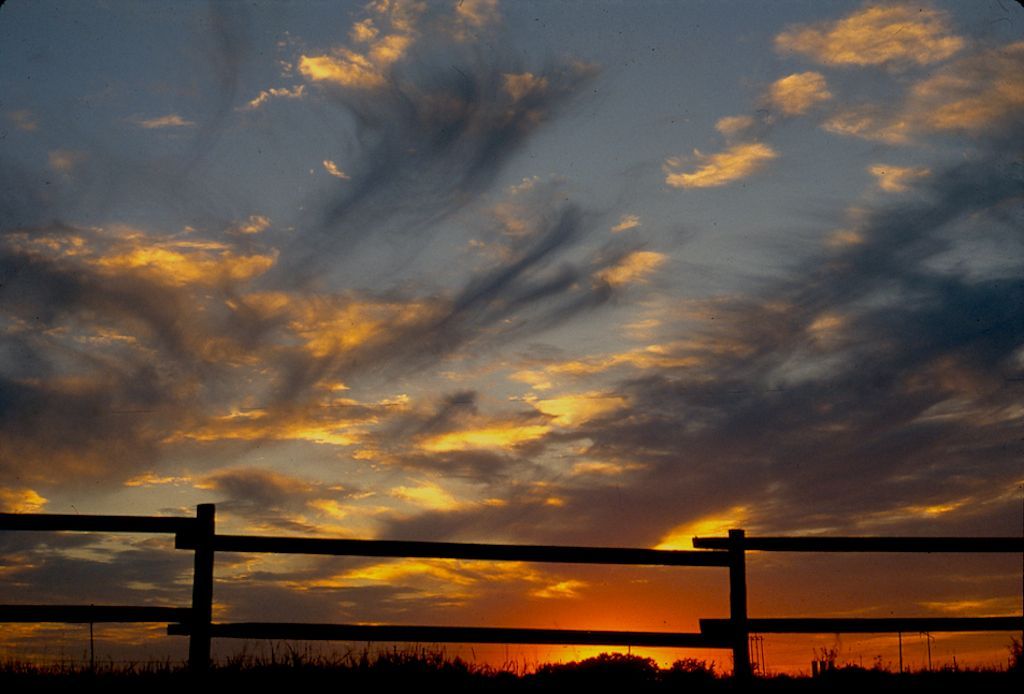
We looked at each other, both recognizing how potentially profound this statement was, as I asked: “and how is the view from there”? She responded: I can look both ways ... it feels secure, something to hang on to when the wind picks up -- that represents my resilience ... I don’t want to be a fence sitter but may have to stay there awhile ... the clouds may be stormy up there, but I feel absolute potential in this sky.
What an expansion from ‘is it a sunrise, or a sunset’! ... which might also apply to this question and are worthwhile exploring. This ‘on the fence’ metaphor was a big turning point in how she could live with more balance and patience as they sorted out their living situation.
Rocks feel like sentient beings to many people. What might these say about your life? The connecting lines and circles within circles in this mandala are human-made patterns – what if we add the dimension of ancient wisdom and the meaning of a medicine wheel? Is there continuity in your life? Do you have good connections? What might this evoke to address your question?
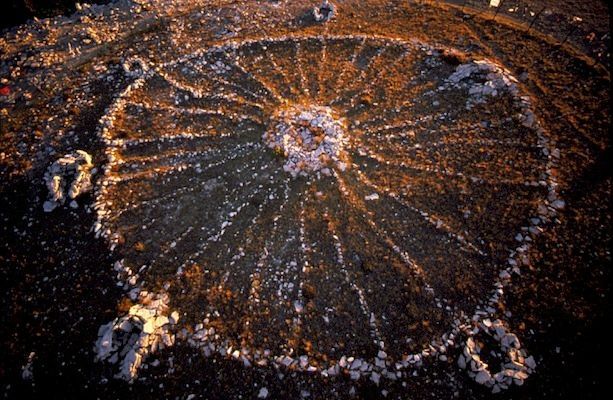
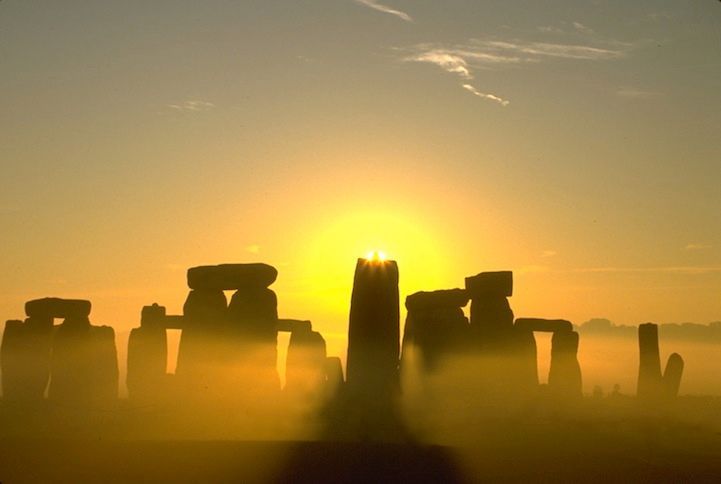
This sun-kissed cultural icon of stones is another echo of ancient wisdom ... what might the mist- shrouded sunrise light portray about your question? Even if you don’t know the story of Stonehenge, what part of your life might this depict? Is there a mystery waiting to be highlighted? ... or something in your life that you want to shine a light on? What is hidden in the mists swirling around you? Are there obstructions in your life that feel as big as these boulders?
Water is often symbolic of emotions and flow in our lives, or cleansing ... the shape of this wave always evokes a sense of wonder and awe. Maybe it also says something about timing: being ready or alert and ‘on the spot,’ in the right place at the right time to be able to capture this image.
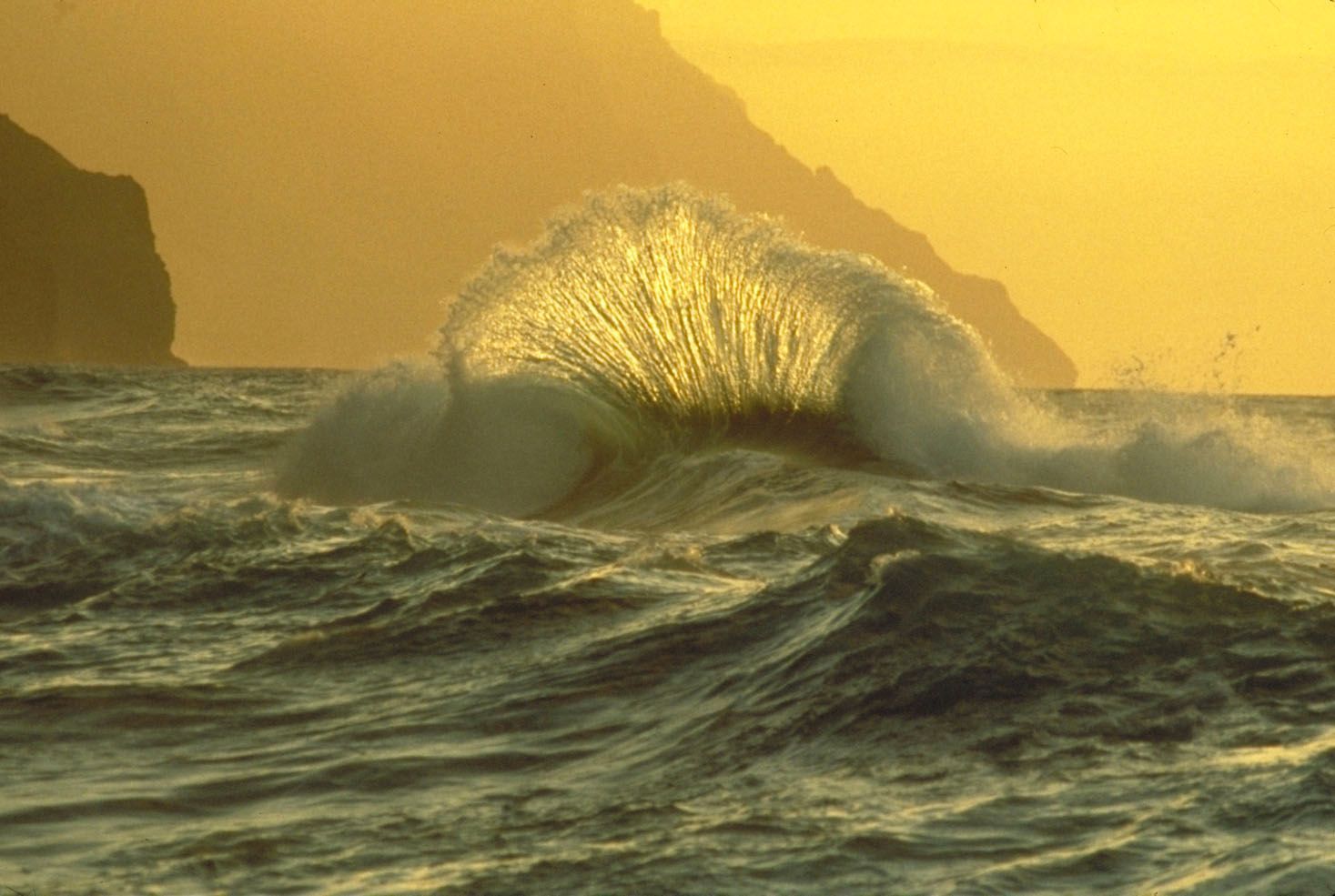
Do you prepare like this in your life to be able to ‘catch the wave’? How much patience do you have to wait for the perfect creation to appear?
There may also be chaos below this wave – I can imagine the water breaking on a hidden rock to produce this beauty ... so maybe it is about ‘being wary of the unseen’ ... or perhaps to question ‘what’s beneath surface beauty’ -- or conversely, maybe it’s about beauty emerging from deep within?
This water has different magic ... a soft sensuous flow, like liquid velvet.
Have you found that luscious place inside of you? Are you resisting its flow, or can you allow it to cradle and envelop you?
Are you soft enough in your life ... do you nurture yourself, and others?
What might it say about your question?
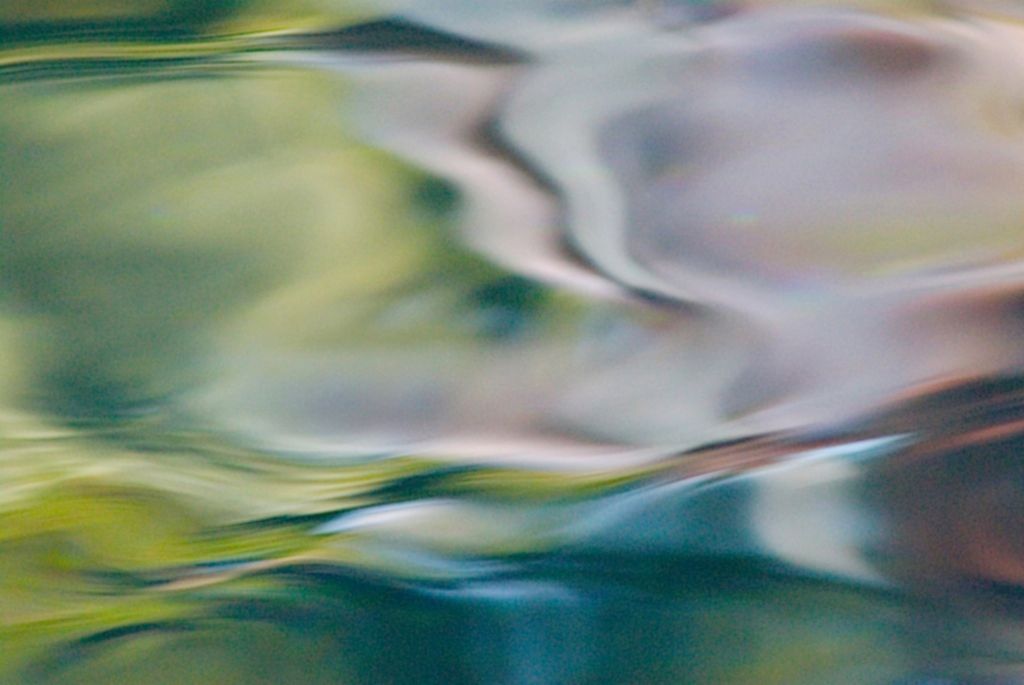
Sand may have a similar soft texture, a holding warmth, a caressing relaxation to sink into ... or it may feel granular, pervasive and irritating ... it might evoke childhood beach memories of timelessness, and a yearning for freedom and play ... mixed with the scent of salt air and sunscreen that reminds you
of every beach you have ever left footprints on ...
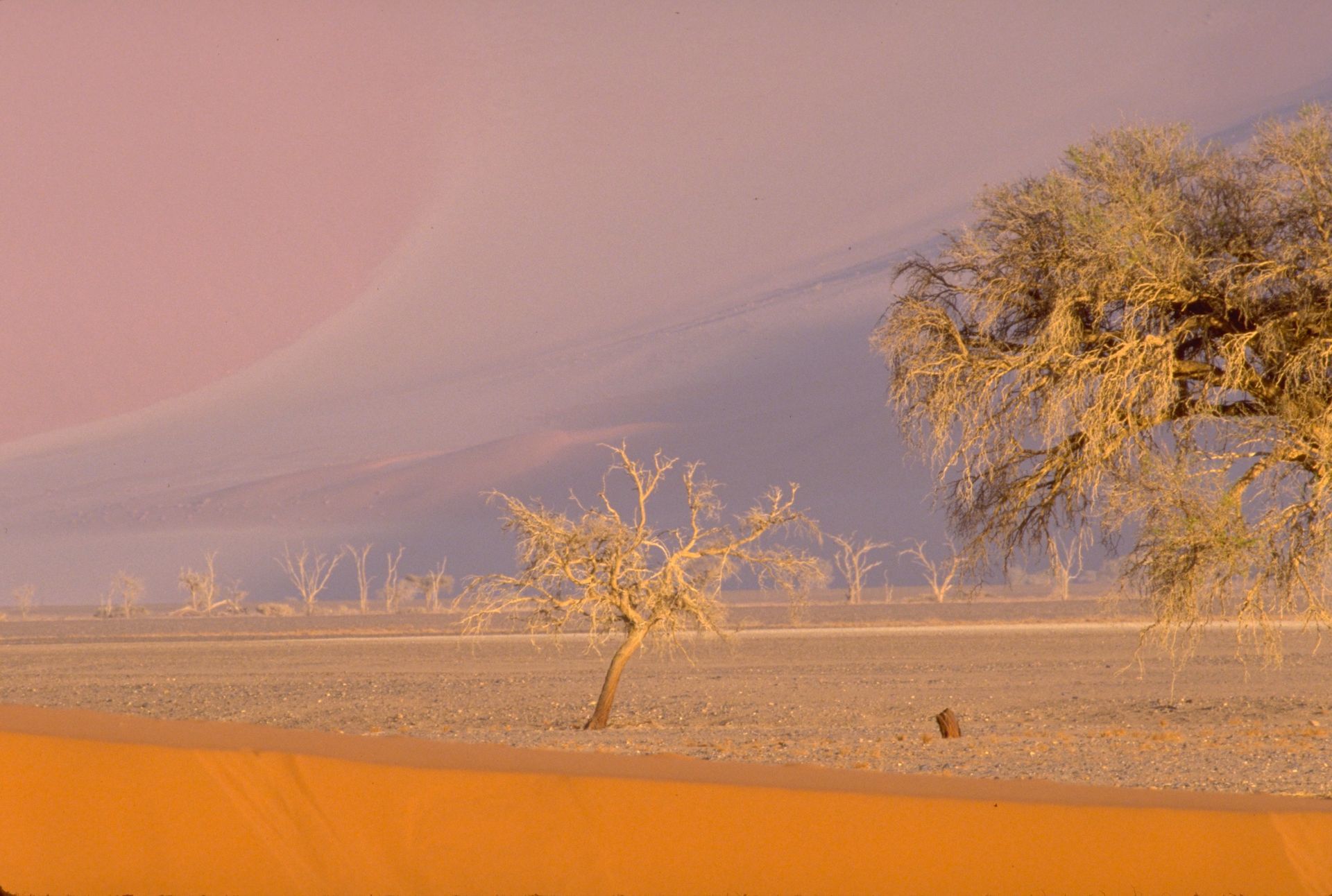
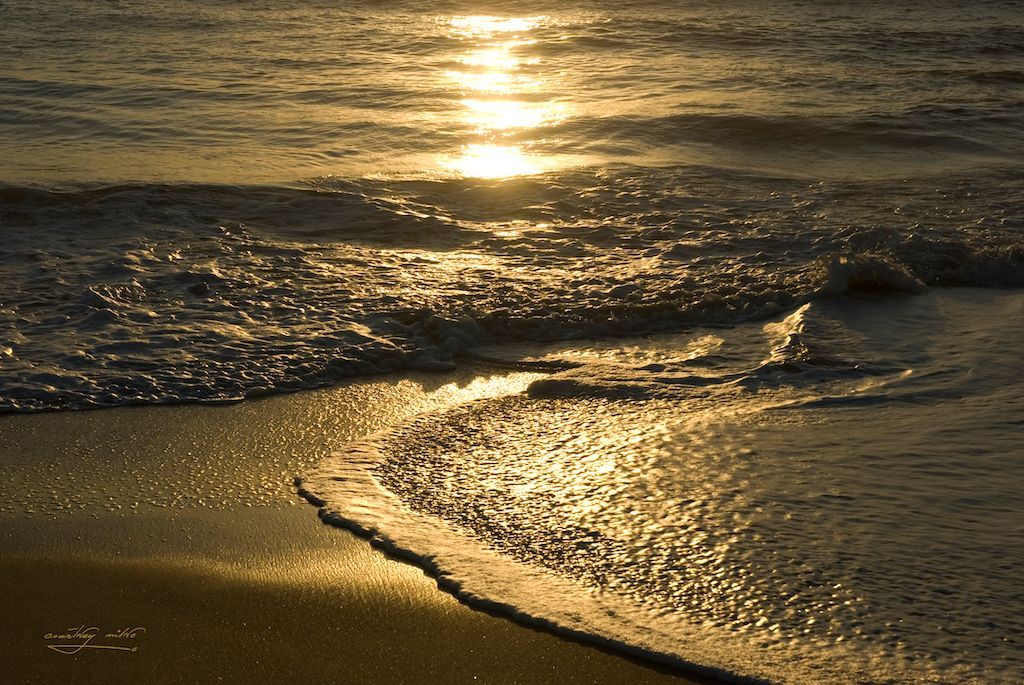
... while desert sand may evoke a sense of desolation ... or a feeling of being lost in the wilderness ... or perhaps the grandeur of such terrible beauty in the solitude of a place of peace and retreat ...
Do these images speak to your question? ... and prompt your knowingness?
Mountains and valleys can be powerful symbols of timelessness and freedom ... retreat and solitude ...
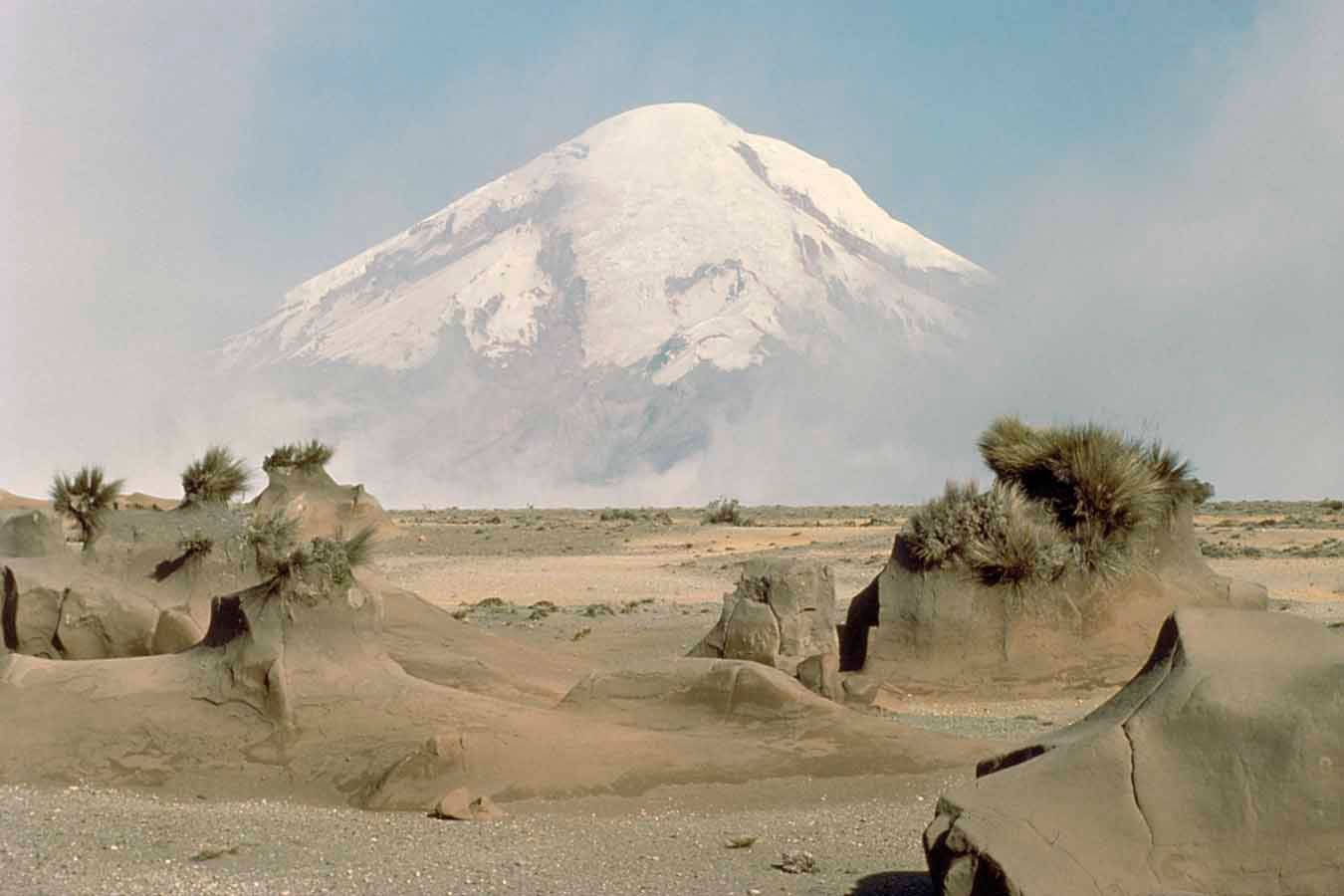
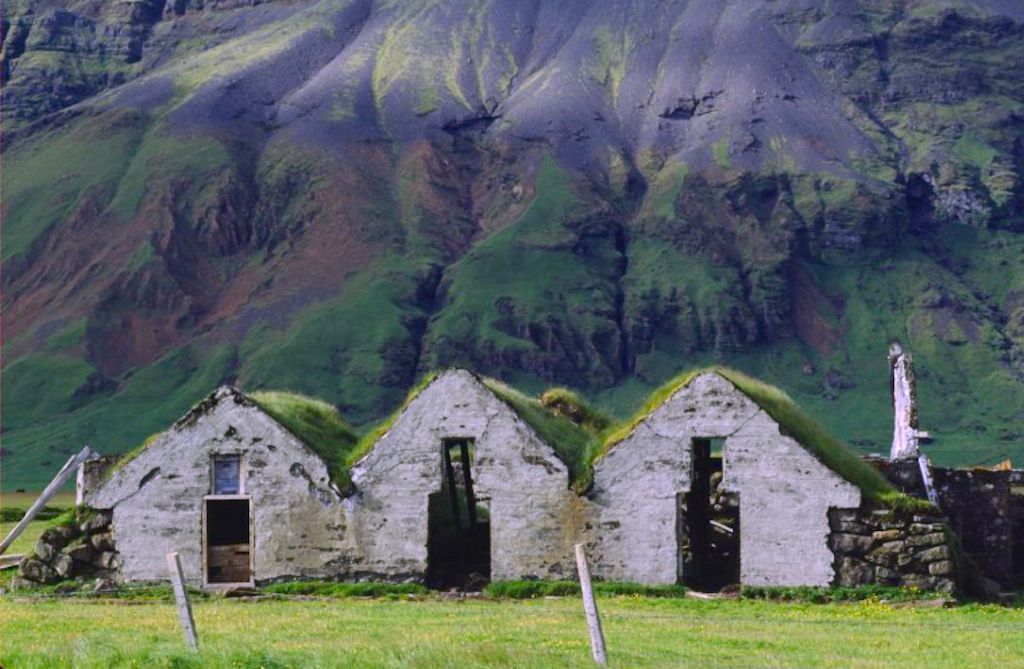

In many worldwide traditions mountains are places of spiritual inspiration, evoking a sense of closeness to a divine power and to other-worldly realms. At a more profane level, they may be a symbol of achievement, offering a challenge, an invitation to go to the top ... are you curious about the view from the peak? ... or to see what is waiting on the other side? Or does it feel more daunting, an unattainable obstacle? What might this reflect in your life? Obstacle ... or opportunity?
The folds of purple mountain nesting around the old buildings may offer a sense of safety, protection and shelter ... even a sense of homecoming ... this image always leaves me feeling whimsical and nostalgic. For others, it feels claustrophobic and desolate ... barren and crumbling ... I might ask: “is there a part of you that is disintegrating ... or something old that you need to shed?”
Whereas this lush green valley landscape feels soft and nourishing ... with a freshness and pristine beauty to enfold you ... does it leave you yearning for such a greening, life-enhancing place in your life?
What else might these images say about your question?
Cycles of life as seen in nature are often reminders of change, as well as the comfort of continuity and the eternal. A fiery sky may offer a feeling of power and hope ... or echo some internal chaos. Some may see this is as stormy ... an impending disaster ... others may focus on the horizon line as an anchor of safety ... while others might feel it as a limitation ... or alternatively, a threshold to new possibilities.

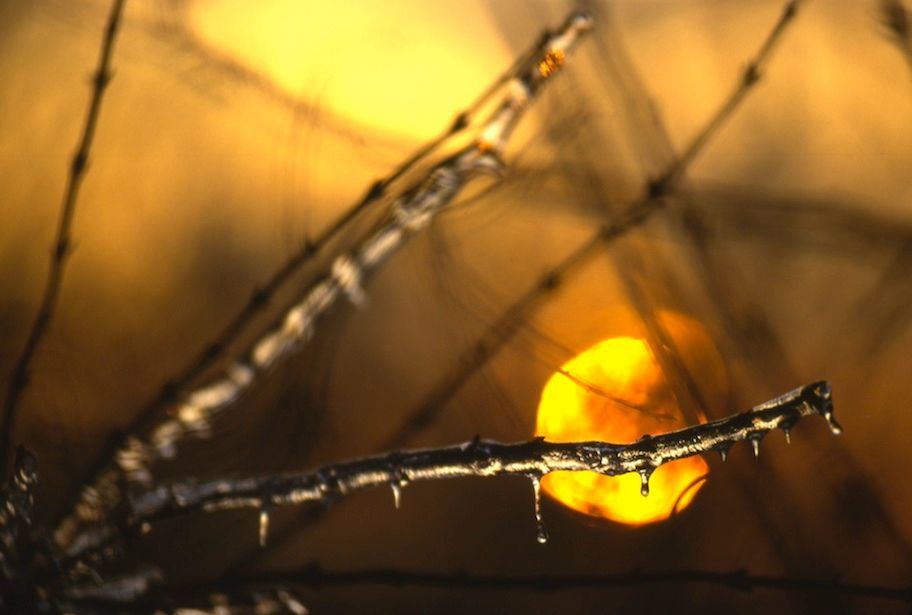
The sun often feels like that reliable continuity witnessed in the eternal returns ... the daily, monthly or annual cycles of movement of planetary and cosmic beings. In this image the sun is overlaid with ice-laden branches ... is there some aspect of your life that needs to be melted ... warmed up?
Trees often evoke feelings of rootedness, earthly connection, security ... inspiration ... wildness ... this weeping birch over the pool perhaps says more about harmony ... interconnectedness ... and peace ...
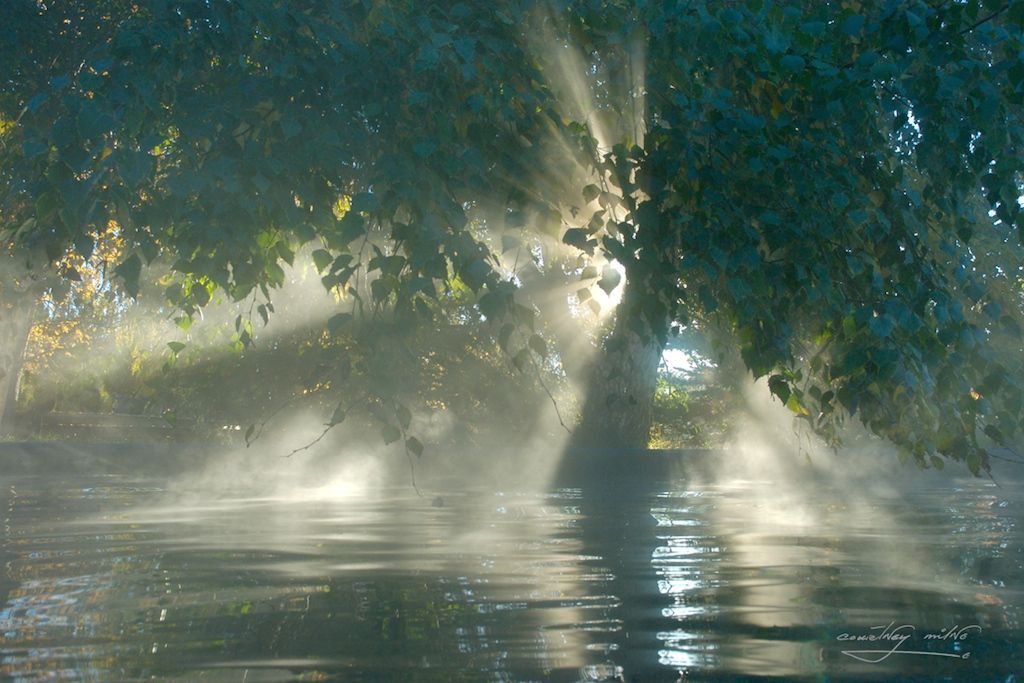
For some, this winter grove of trees brings delight ... curiosity ... a playful sense of wonder ... while others feel the black and white contortions and twisting shadows as ominous ... the chilly snow penetrating and unwelcome.
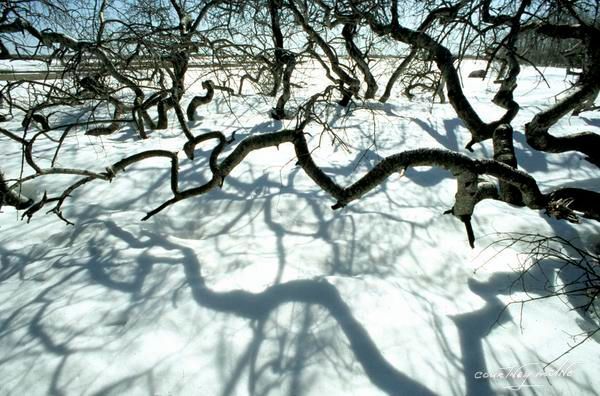
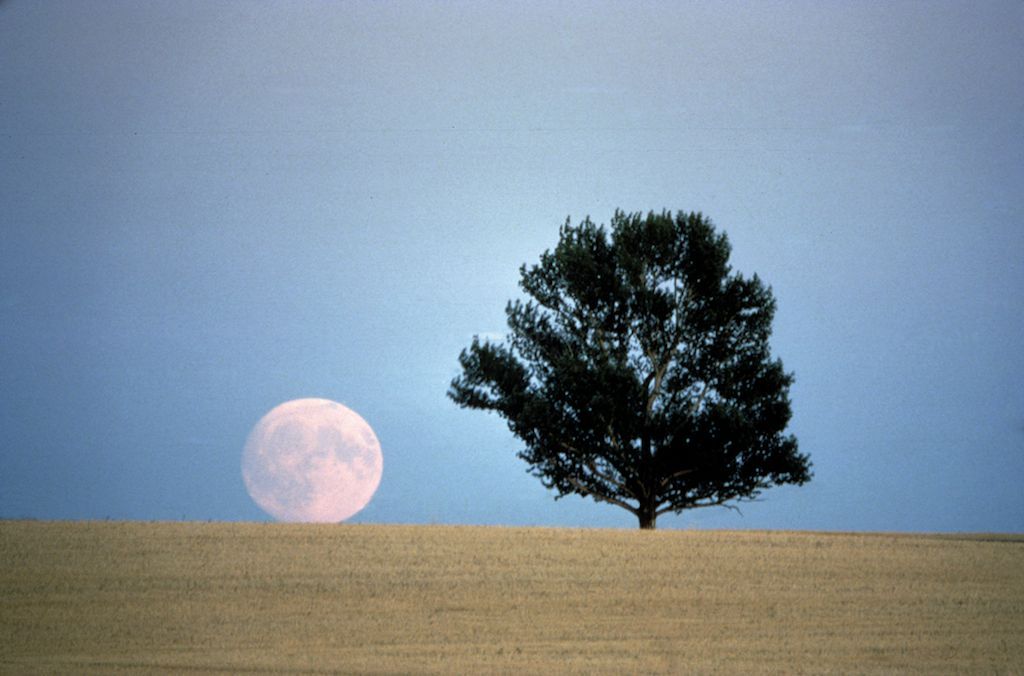
For me, the moon and tree companions portray purity, simplicity, a masculine-feminine balance ... togetherness .... timelessness ... and something about the timing needed to capture the pink-tinged perfection as the moon sat on the earth for only a moment ... would you have the same patience?
Cycles of time are also echoed in this damaged temple at Angkor Wat ... can you still feel a spiritual impulse from these walls anointed with light? ... does its antiquity bring a sense of comfort and the continuity of ageless wisdom, as it does for me? ... or is it just a pile of damaged pillars? ... is this the organic change of wabi sabi, or are we witnessing willful destruction? ... might it reflect something tumultuous in your life? ... something that feels broken in you? ... what might it be trying to tell you?
I had been using this image for many years before taking note of the golden light in the doorway at the back ... until a client identified it as a summons for him to step out of the chaos of his life and to enter the sanctuary ... it became his spiritual portal ... and another avenue of my seeing.

Human interactions may also speak to us about time and chaos ... I see the transitional beauty of wabi sabi here in this sacred lake at Bodghaya, India, where the colorful seasonal decay of plants is interspersed with cigarette butts and other human litter. Despite the debris encircling the symbolic lotus blossoms, the reflected statue offers a meditative stillness, and echoes the sanctity of the nearby Bodhi Tree where the Buddha sat to reach enlightenment.
Compare this with the simple human activity of laundry draped on an ice-rimed line amid the vestiges of autumn leaves stilled by an unexpected snow fall ... can we appreciate the unanticipated beauty in these restless landscapes? What might the element of surprise weather ... and ‘weathering’ ... and the lack of control over circumstances of nature (human and otherwise) say about your life ... and about the question you are carrying? Can you find delight in the uncertainty?
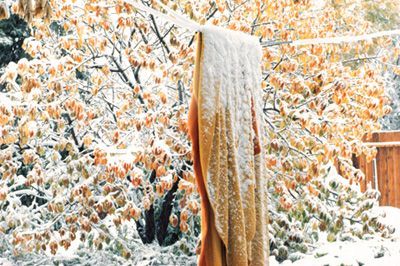
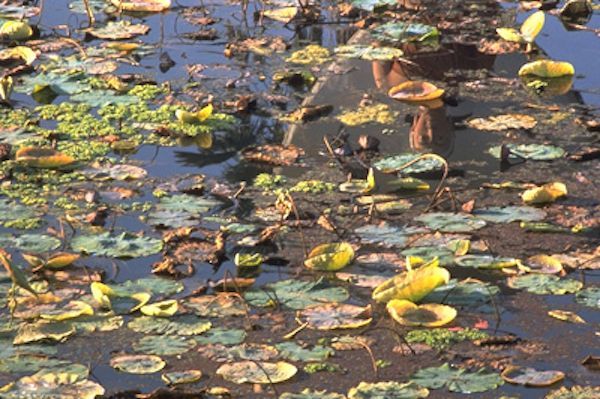
Animals are often significant in our psyche ... for some, this snow-draped bison may be a symbol of the past ... of strength, reliance, nobility and power ... and of survival in arduous conditions. Does this say something about difficulties in your life? Or is it about calling on your power?

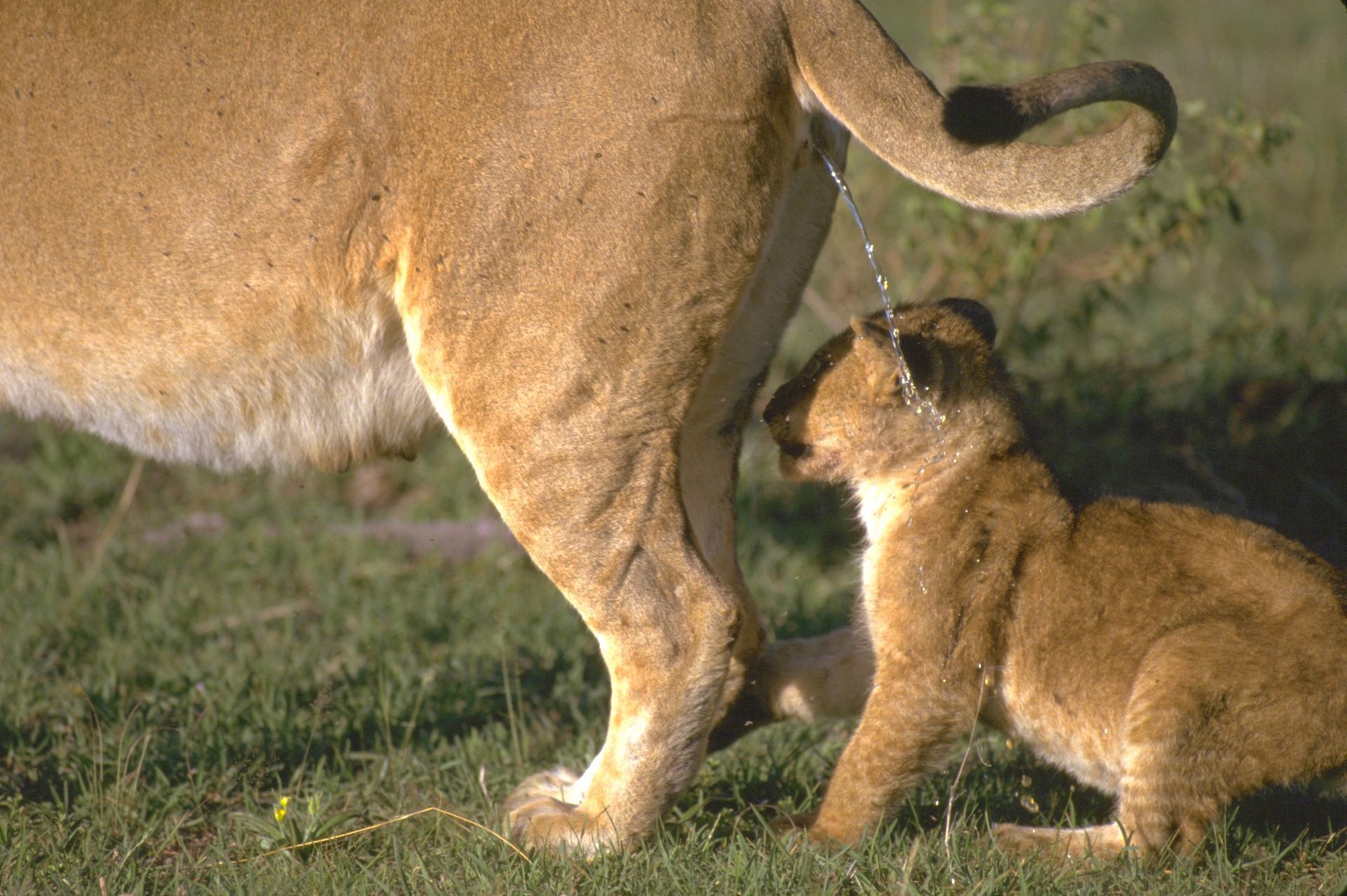
And now for a bit of levity: what does this image of an African lion and her cub say? Is it about mother love ... discipline ... keeping your place ... or about being in the wrong place at the wrong time? ... about getting out of the way? ... about independence? ... discernment? ... making good decisions?
So, the Inner Landscapes Process is about witnessing, observing, listening deep inside, allowing and discerning feelings, being adventurous, surrendering to the moment ... and as Arthur Zajoncs said: seeing things you didn’t see originally ... and perhaps which no one before you has seen ...
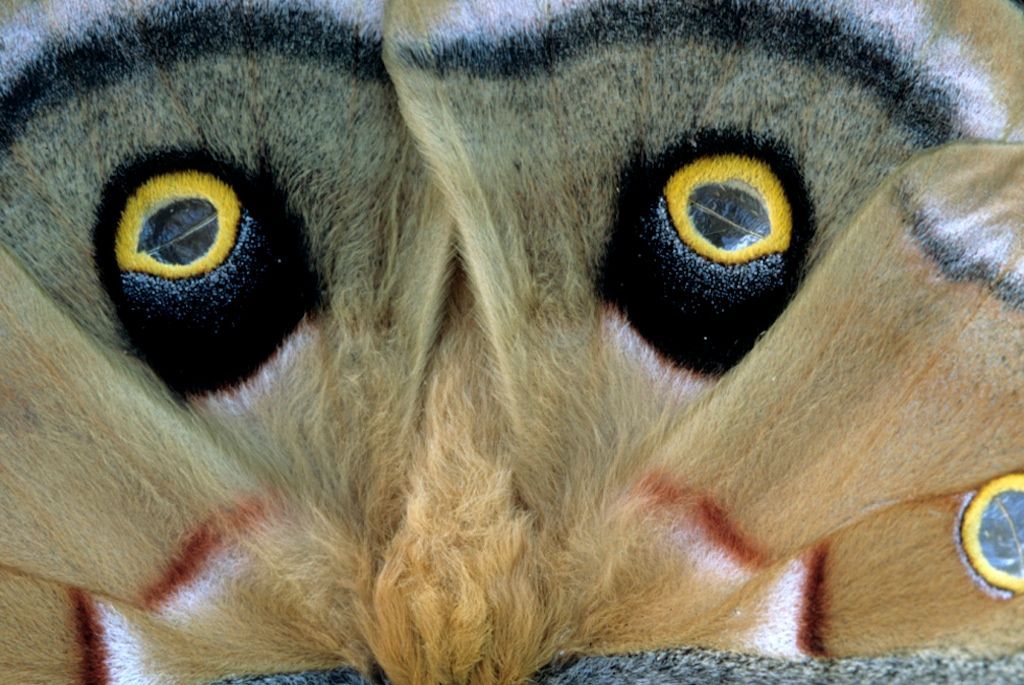
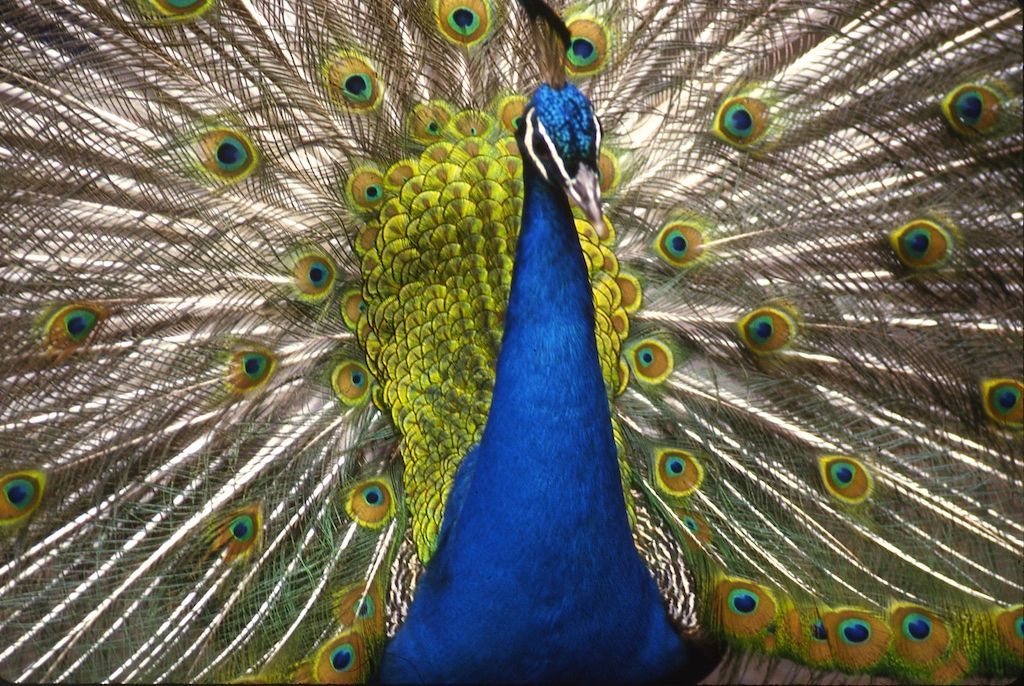
Finally, it is about opening in an elegant way ...
... to self-exploration and to new ways of looking at the world ... Seeing With New Eyes ... delving into layers of awareness that might open the full story of our lives as we listen to what pops into our minds or out of our mouths, or into our hearts. To follow the advice of U Thant, the former Secretary General of the United Nations, who invited his colleagues to practice the art of listening below the facts ...
... to embody the words of Mark Nepo, author of 7000 Ways to Listen, who said there is a sliver of beginning in each of us ... we need to lean in softly, with a willingness to be changed by what we hear ...
... and I would add, a willingness to be changed by what we see...
I will give the last word to the poet Rainer Marie Rilke:
work of the eyes is done ... now go and do heart work on all the images imprisoned within you ...
and I wish you many blessings on that journey through your inner landscape.
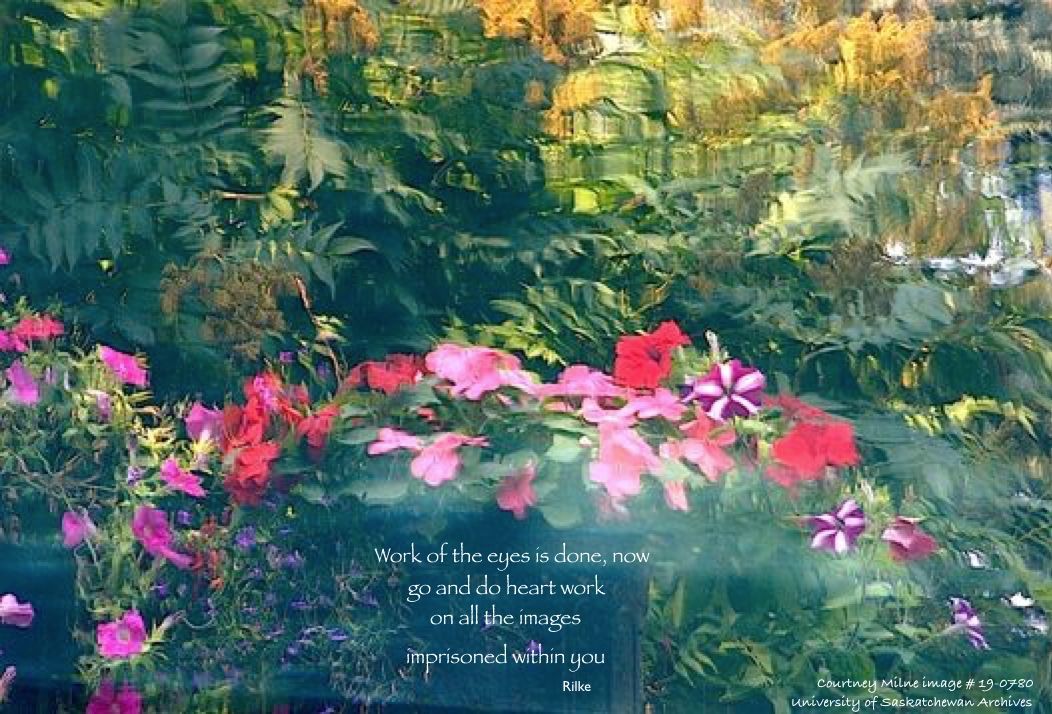
Images by Courtney Milne

